Why are orcas attacking boats and sometimes sinking them?

After four years and hundreds of incidents, researchers remain puzzled why orcas, also known as killer whales, continue to ram boats – sinking a few of them – along the Iberian Peninsula. The most-recent incident was the sinking of a yacht on Oct. 31 in the Strait of Gibraltar.
The origin of these interactions remain a "great mystery," said Alfredo López, a University of Santiago biologist, but he does not believe the behavior is aggressive. Orcas are large dolphins, López said. And like dolphins, the events could stem from the orcas’ curious and playful behavior, such as trying to race the boats.
López, who specializes in orcas, and his team, Grupo de trabajo Orca Atlántica (GOTA) , have tracked these encounters since 2020. The team’s recent study theorizes the orcas could also be exhibiting cautionary behavior because of some previous traumatic incident.

Where have killer whales interacted with boats?
GOTA has tracked more than 350 interactions just on the Iberian Peninsula since 2020. Most have taken place along the Strait of Gibraltar, but the orcas’ mischief or self-defense may be spreading north. An incident was reported in June in the Shetland Islands in Scotland .
GOTA defines interactions as instances when orcas react to the presence of approaching boats, such as:
- Interaction without physical contact.
- Some physical contact without damage.
- Contact that causes serious damage that could prevent the navigation of the boat.
Recent incidents when orcas attacked boats and sank them
The Oct. 31 incident occurred in the Strait of Gibraltar where a pod of orcas sank a mid-size sailing yacht named the Grazie Mamma after a 45-minute interaction, Live Science reported .
On June 19 an orca rammed a 7-ton yacht multiple times off the Shetland Islands in Scotland, according to an account from retired Dutch physicist Dr. Wim Rutten in the Guardian.
"Killer whales are capable of traveling large distances, so it is not out of the ordinary that an animal could travel that far," said Tara Stevens, a marine scientist at CSA Ocean Sciences Inc. "To my knowledge, this data is not available, so we cannot confirm at this time if these are the same animals."
Including the Oct. 31 incident, orcas have sunk four boats this year. The previous sinking occured in May , off the coasts of Portugal and Spain, but whale expert Anne Gordon told USA TODAY in May that the incidents shouldn't heighten concerns about the whales.
"Yes, they're killer whales. And yes, their job is to be predators in the ocean, but in normal circumstances there is absolutely zero threat to humans in a boat," Gordon said .
Most of the interactions have involved sailboats, but fishing boats, semi-rigid boats and motorboats haven’t gone unscathed.
Are these the same killer whales attacking boats or unrelated incidents?
López hypothesizes that the interactions could be a self-induced behavior where you're "inventing something new and repeat it. This behavior coincides with the profile of the juveniles." He said it could also be response to an aversive situation: "One or several individuals had lived a bad experience and tried to stop the boat so as not to repeat it. This behavior coincides with the profile of adults."
"Fifteen different orcas from at least three different communities" have been identified, López said. And they are probably teaching the habit to others, or the others are mimicking the behavior. "Without a doubt orcas learn by imitation," López said. The majority of the culprits are juveniles that touch, push and sometimes turn the vessels. He noted that adult males don't appear to be involved.
"Killer whales are incredibly intelligent animals that do learn behaviors from observation of other individuals," Stevens said. "Typically, very unique behaviors such as this are learned 'within' group, meaning individuals of the group may learn from each other and participate, but that does not necessarily mean that the behavior is shared outside the group with other individuals."
Which pods of killer whales are battering the boats?
Orcas operate in a social structure called a pod. These pods generally are a group of several generations of related orcas. Hierarchies are established within them, and they communicate and learn from one another, the study reads.
GOTA researchers have identified the individuals responsible for the interactions . One large pod is made up of three generations. It starts with grandmother Gladis Lamari, her daughter, grandchildren and a few other relatives.
Another pod comprises siblings Gladis Negra and Gladis Peque. Both have been photographed interacting with boats. Their mother, Gladis Herbille, has generally just watched her children at a distance from the boats, the study said.
A third group in the study are siblings and a cousin.
Orcas often tracking bluefin tuna
The movements of orcas depend on the location of their main food source, bluefin tuna. The migratory movements of tuna are very dynamic and predicting exactly where interactions will take place is very difficult, the report said. According to NOAA , Atlantic bluefin tuna are the largest in the tuna family and can reach a length of 13 feet and up to 2,000 pounds. They are a highly migratory species and can migrate thousands of miles across an entire ocean.
About the Iberian orcas
While they are called killer whales, orcas are actually the largest member of the dolphin family. This aquatic marine mammal family includes whales, dolphins and porpoises.
The Iberian orca is a subpopulation of the Atlantic orca population. These orcas are from the Strait of Gibraltar and the Gulf of Cádiz. Iberian orcas are small: 16 to 21 feet compared with Atlantic orcas that measure almost 30 feet.
Orcas in general are fast, reaching speeds up to 27.6 mph. By comparison, a 39-foot sailboat travels at about 9.2 mph.
What should you do if your boat is attacked by killer whales
The study recommended these tips to reduce the duration and intensity of the interaction.
- Stop the boat.
- Leave the rudder loose.
- Radio for help.
According to the GOTA study, most of the vessels involved in interactions are medium-sized (less than 49 feet) sailboats, with a paddle rudder, sailing at an average of 6.9 mph, under both sail and motor.
The interactions have been mostly concentrated in the spring and summer months and have been concentrated in the midday hours. They've lasted on average for 40 minutes, but several last less than 30 minutes.
Types of rudders Iberian orcas have approached
"It is very common for dolphins to interact with the boats and approach," López said. "Before 2020, the orcas did it with frequency but they weren't classified as attacks. Now, sometimes they touch the boat and the encounter is unfairly classified as an attack. They judge socially before understanding what (orcas) do."
Orcas have sunk 3 boats in Europe and appear to be teaching others to do the same. But why?
Scientists think a traumatized orca initiated the assault on boats after a "critical moment of agony" and that the behavior is spreading among the population through social learning.
Orcas have attacked and sunk a third boat off the Iberian coast of Europe, and experts now believe the behavior is being copied by the rest of the population.
Three orcas ( Orcinus orca ), also known as killer whales, struck the yacht on the night of May 4 in the Strait of Gibraltar, off the coast of Spain, and pierced the rudder. "There were two smaller and one larger orca," skipper Werner Schaufelberger told the German publication Yacht . "The little ones shook the rudder at the back while the big one repeatedly backed up and rammed the ship with full force from the side."
Schaufelberger said he saw the smaller orcas imitate the larger one. "The two little orcas observed the bigger one's technique and, with a slight run-up, they too slammed into the boat." Spanish coast guards rescued the crew and towed the boat to Barbate, but it sank at the port entrance.
Two days earlier, a pod of six orcas assailed another sailboat navigating the strait. Greg Blackburn, who was aboard the vessel, looked on as a mother orca appeared to teach her calf how to charge into the rudder. "It was definitely some form of education, teaching going on," Blackburn told 9news .
Reports of aggressive encounters with orcas off the Iberian coast began in May 2020 and are becoming more frequent, according to a study published June 2022 in the journal Marine Mammal Science . Assaults seem to be mainly directed at sailing boats and follow a clear pattern, with orcas approaching from the stern to strike the rudder, then losing interest once they have successfully stopped the boat.
"The reports of interactions have been continuous since 2020 in places where orcas are found, either in Galicia or in the Strait," said co-author Alfredo López Fernandez , a biologist at the University of Aveiro in Portugal and representative of the Grupo de Trabajo Orca Atlántica, or Atlantic Orca Working Group.
Related: Grisly new footage shows orcas attacking a great white shark and eating its liver
Sign up for the Live Science daily newsletter now
Get the world’s most fascinating discoveries delivered straight to your inbox.
Most encounters have been harmless, López Fernandez told Live Science in an email. "In more than 500 interaction events recorded since 2020 there are three sunken ships. We estimate that killer whales only touch one ship out of every hundred that sail through a location."
The spike in aggression towards boats is a recent phenomenon, López Fernandez said. Researchers think that a traumatic event may have triggered a change in the behavior of one orca, which the rest of the population has learned to imitate.
"The orcas are doing this on purpose, of course, we don't know the origin or the motivation, but defensive behavior based on trauma, as the origin of all this, gains more strength for us every day," López Fernandez said.
Experts suspect that a female orca they call White Gladis suffered a "critical moment of agony" — a collision with a boat or entrapment during illegal fishing — that flipped a behavioral switch. "That traumatized orca is the one that started this behavior of physical contact with the boat," López Fernandez said.
Orcas are social creatures that can easily learn and reproduce behaviors performed by others, according to the 2022 study. In the majority of reported cases , orcas have made a beeline for a boat's rudder and either bitten, bent or broken it.
"We do not interpret that the orcas are teaching the young, although the behavior has spread to the young vertically, simply by imitation, and later horizontally among them, because they consider it something important in their lives," López Fernandez said.
— 2 orcas slaughter 19 sharks in a single day in South Africa, eating their livers and leaving them to rot
— Orca males are burnouts who let their moms do all the hunting, surprising study finds
— Orcas and humpbacks clash in a violent melee of breaching and biting
Orcas appear to perceive the behavior as advantageous, despite the risk they run by slamming into moving boat structures, López Fernandez added. Since the abnormal interactions began in 2020, four orcas belonging to a subpopulation living in Iberian waters have died, although their deaths cannot be directly linked to encounters with boats.
The unusual behavior could also be playful or what researchers call a "fad" — a behavior initiated by one or two individuals and temporarily picked up by others before it’s abandoned. "They are incredibly curious and playful animals and so this might be more of a play thing as opposed to an aggressive thing," Deborah Giles , an orca researcher at the University of Washington and at the non-profit Wild Orca, told Live Science.
As the number of incidents grows, there is increased concern both for sailors and for the Iberian orca subpopulation, which is listed as critically endangered by the IUCN Red List . The last census, in 2011, recorded just 39 Iberian orcas, according to the 2022 study. "If this situation continues or intensifies, it could become a real concern for the mariners' safety and a conservation issue for this endangered subpopulation of killer whales," the researchers wrote.

Sascha is a U.K.-based trainee staff writer at Live Science. She holds a bachelor’s degree in biology from the University of Southampton in England and a master’s degree in science communication from Imperial College London. Her work has appeared in The Guardian and the health website Zoe. Besides writing, she enjoys playing tennis, bread-making and browsing second-hand shops for hidden gems.
Brutal footage shows orca mom and son team up to drown another pod's calf
Dying orca's final moments after 'desperate' effort to stay afloat captured in 1st of its kind footage
'We don't yet have the know-how to properly maintain a corpse brain': Why cryonics is a non-starter in our quest for immortality
- ConvictedFelon https://en.m.wikipedia.org/wiki/Porphyrios_(whale) Reply
- Jesus Perhaps it's your exhaust and pollution, and noise. Perhaps frequencies disturb their consciousness. Reply
- slanagat If it were frequencies and exhaust I'd expect them to go after powerboats instead of sailboats. It's intriguing. Reply
- Jesus Perhaps, a neurotoxin. Perhaps, a cry for help. Reply
- schwingingatfences Orca see; orca do. They are intelligent. I'm relieved the focus is how to protect the orca as well as the mariners when the encounters occur. Reply
- puffrfeesh I think the orca can hear the humans interacting in a sail boat they don't like human noises because they aren't the same specie and are foreign to their habitat. Like territorial protection for their water. They are saying we are the largest and most aggressive and we eat white sharks livers just for a snack. Reply
- Nog How about the global warmers are bending the orca's minds with the vibrations from the idiotic windmills. Reply
admin said: Scientists think a traumatized orca initiated the assault on boats after a "critical moment of agony" and that the behavior is spreading among the population through social learning. Orcas have sunk 3 boats in Europe and appear to be teaching others to do the same. But why? : Read more
slanagat said: If it were frequencies and exhaust I'd expect them to go after powerboats instead of sailboats. It's intriguing.
- View All 17 Comments
Most Popular
By Jennifer Nalewicki March 22, 2024
By Sharmila Kuthunur March 22, 2024
By Tom Metcalfe March 22, 2024
By Patrick Pester March 22, 2024
By Roland Moore-Coyler March 22, 2024
By Charles Q. Choi March 22, 2024
By Jamie Carter March 22, 2024
By Nicoletta Lanese March 21, 2024
By Harry Baker March 21, 2024
- 2 Mass grave of plague victims may be largest ever found in Europe, archaeologists say
- 3 India's evolutionary past tied to huge migration 50,000 years ago and to now-extinct human relatives
- 4 1,900-year-old coins from Jewish revolt against the Romans discovered in the Judaen desert
- 5 Dying SpaceX rocket creates glowing, galaxy-like spiral in the middle of the Northern Lights
- 2 Speck of light spotted by Hubble is one of the most enormous galaxies in the early universe, James Webb telescope reveals
- 3 8-hour intermittent fasting tied to 90% higher risk of cardiovascular death, early data hint
- 4 Beluga whales appear to change the shape of their melon heads to communicate, scientists discover
- 5 Brutal footage shows orca mom and son team up to drown another pod's calf
May 24, 2023
Why Has a Group of Orcas Suddenly Started Attacking Boats?
Killer whales in a group near Spain and Portugal may be teaching one another to mess with small boats. They sank their third vessel earlier this month
By Stephanie Pappas
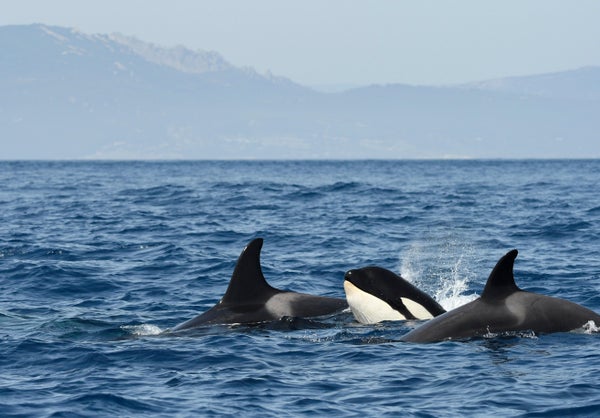
A group of three orcas, also known as killer whales, are seen swimming in the Strait of Gibraltar. Individuals in the critically endangered subpopulation have been attacking boats off the coast of the Iberian Peninsula.
Malcolm Schuyl/Alamy Stock Photo
A trio of orcas attacked a boat in the Strait of Gibraltar earlier this month, damaging it so badly that it sank soon afterward.
The May 4 incident was the third time killer whales ( Orcinus orca ) have sunk a vessel off the coasts of Portugal and Spain in the past three years. The subpopulation of orcas in this region began harassing boats, most often by biting at their rudder, in 2020. Almost 20 percent of these attacks caused enough damage to disable the vessels, says Alfredo López, an orca researcher at the Atlantic Orca Working Group (GTOA), which monitors the Iberian killer whale population. “It is a rare behavior that has only been detected in this part of the world,” he says.
Researchers aren’t sure why the orcas are going after the watercraft. There are two hypotheses, according to López. One is that the killer whales have invented a new fad, something that subpopulations of these members of the dolphin family are known to do. Much as in humans, orca fads are often spearheaded by juveniles, López says. Alternatively, the attacks may be a response to a bad past experience involving a boat.
On supporting science journalism
If you're enjoying this article, consider supporting our award-winning journalism by subscribing . By purchasing a subscription you are helping to ensure the future of impactful stories about the discoveries and ideas shaping our world today.
The first known incident occurred in May 2020 in the Strait of Gibraltar, an area with heavy boat traffic. Since then GTOA has recorded 505 cases of orcas reacting to boats. Sometimes they simply approached the vessels, and only a fraction of cases involved physical contact, López says. In a study published in June 2022 in Marine Mammal Science , he and his colleagues cataloged 49 instances of orca-boat contact in 2020 alone. The vast majority of the attacks were on sailboats or catamarans, with a handful involving fishing boats and motorboats. The average length of the vessels was 12 meters (39 feet). For comparison, a full-grown orca can be 9.2 meters (30 feet) long.
The researchers found that the orcas preferentially attack the boats’ rudder, sometimes scraping the hull with their teeth. Such attacks often snap the rudder, leaving the boat unable to navigate. In three cases, the animals damaged a boat so badly that it sank: In July 2022 they sank a sailboat with five people onboard. In November 2022 they caused a sailboat carrying four to go down. And finally, in this month’s attack, the Swiss sailing yacht Champagne had to be abandoned, and the vessel sank while it was towed to shore. In all cases, the people onboard were rescued safely.
In 2020 researchers observed nine different individual killer whales attacking boats; it’s unclear if others have since joined in. The attacks tended to come from two separate groups: a trio of juveniles occasionally joined by a fourth and a mixed-aged group consisting of an adult female named White Gladis, two of her young offspring and two of her sisters. Because White Gladis was the only adult involved in the initial incidents, the researchers speculate that she may have become entangled in a fishing line at some point, giving her a bad association with boats. Other adult orcas in the region have injuries consistent with boat collisions or entanglement, López says. “All this has to make us reflect on the fact that human activities, even in an indirect way, are at the origin of this behavior,” he says.
The safe rescue of everyone involved, however, suggests to Deborah Giles that these orcas don’t have malevolent motivations against humans. Giles, science and research director of the Washington State–based nonprofit conservation organization Wild Orca, points out that humans relentlessly harassed killer whales off the coasts of Washington and Oregon in the 1960s and 1970s, capturing young orcas and taking them away for display at marine parks. “These are animals that, every single one of them, had been captured at one point or another—most whales multiple times. And these are whales that saw their babies being taken away from them and put on trucks and driven away, never to be seen again,” Giles says. “And yet these whales never attacked boats, never attacked humans.”
Though it’s possible that the orcas around the Iberian Peninsula could be reacting to a bad experience with a boat, Giles says, it’s pure speculation to attribute that motivation to the animals. The behavior does seem to be learned, she says, but could simply be a fad without much rhyme or reason—to the human mind, anyway. Famously, some members of the Southern Resident orcas that cruise Washington’s Puget Sound each summer and fall spent the summer of 1987 wearing dead salmon on their head. There was no apparent reason for salmon hats to come in vogue in orca circles, but the behavior spread and persisted for a few months before disappearing again. “We’re not going to know what’s happening with this population,” Giles says, referring to the Iberian orcas.
The Iberian orca attacks typically last less than 30 minutes, but they can sometimes go on for up to two hours, according to the 2022 study. In the case of the Champagne, two juvenile killer whales went after the rudder while an adult repeatedly rammed the boat, crew members told the German magazine Yacht . The attack lasted 90 minutes.
The Iberian orca subpopulation is considered critically endangered, with only 39 animals the last time a full census was conducted in 2011. A 2014 study found that this subpopulation follows the migration of their key prey , Atlantic bluefin tuna—a route that puts them in close contact with human fishing, military activities and recreational boating. Maritime authorities recommend that boaters in the area slow down and try to stay away from orcas, López says, but there is no guaranteed way to avoid the animals. He and his colleagues fear the boat attacks will come back and bite the orcas, either because boaters will lash out or because the attacks are dangerous to the animals themselves. “They run a great risk of getting hurt,” López says.
- Skip to main content
- Keyboard shortcuts for audio player
Killer whales are 'attacking' sailboats near Europe's coast. Scientists don't know why
Scott Neuman
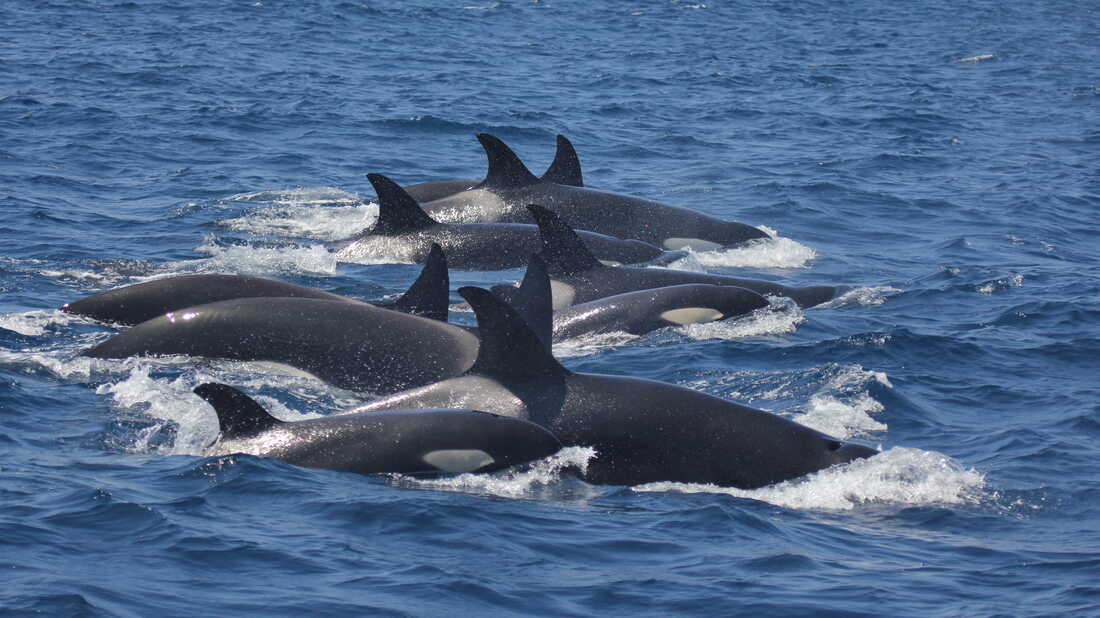
An orca pod seen in the Strait of Gibraltar in 2021. Renaud de Stephanis/CIRCE Conservación Information and Research hide caption
An orca pod seen in the Strait of Gibraltar in 2021.
Ester Kristine Storkson was asleep on her father's small yacht earlier this month, sailing off the coast of France, when she was violently awakened.
Scrambling on deck, she spotted several orcas, or killer whales, surrounding them. The steering wheel swung wildly. At one point, the 37-foot sailboat was pushed through 180 degrees, heading it in the opposite direction.
They were "ramming the boat," Storkson says. "They [hit] us repeatedly ... giving us the impression that it was a coordinated attack."
"I told my dad, 'I'm not thinking clearly, so you need to think for me,'" the 27-year-old Norwegian medical student says. "Thankfully, he is a very calm and centered person, and made me feel safe by gently talking about the situation."
After about 15 minutes, the orcas broke off, leaving father and daughter to assess the damage. They stuck a GoPro camera in the water, she says, and could see that "approximately three-quarters of [the rudder] was broken off, and some metal was bent."

A screen grab from a video of the encounter between a pod of orcas and the Storkson boat. Ester Kristine Storkson/ hide caption
A screen grab from a video of the encounter between a pod of orcas and the Storkson boat.
For any vessel, losing steering at sea is a serious matter and can be dangerous in adverse conditions and some sailboats have had to be towed into port after orcas destroyed their rudders. Fortunately, the Storksons had enough of their rudder left to limp into Brest, on the French coast, for repairs. But the incident temporarily derailed their plan to reach Madeira, off northwest Africa, part of an ambitious plan to sail around the world.
There is no record of an orca killing a human in the wild. Still, two boats were reportedly sunk by orcas off the coast of Portugal last month, in the worst such encounter since authorities have tracked them.
The incident involving the Storksons is an outlier, says Renaud de Stephanis, president and coordinator at CIRCE Conservación Information and Research, a cetacean research group based in Spain. It was farther north -- nowhere near the Strait of Gibraltar, nor the coast of Portugal or Spain, where other such reports have originated.
That is a conundrum. Up to now, scientists have assumed that only a few animals are involved in these encounters and that they are all from the same pod, de Stephanis says.
"I really don't understand what happened there," he acknowledges. "It's too far away. I mean, I don't think that [the orcas] would go up there for a couple of days and then come back."
These encounters — most scientists shun the word "attack" — have been getting the attention of sailors and scientists alike in the past two years, as their frequency seems to be increasing. Sailing magazines and websites have written about the phenomenon, noting that orcas seem to be especially attracted to a boat's rudder. A Facebook group , with more than 13,000 members, has sprung up to trade personal reports of boat-orca encounters and speculation on avoidance tactics. And, of course, there are no shortage of dramatic videos posted to YouTube.
Scientists don't know the reason, but they have some ideas
Scientists hypothesize that orcas like the water pressure produced by a boat's propeller. "What we think is that they're asking to have the propeller in the face," de Stephanis says. So, when they encounter a sailboat that isn't running its engine, "they get kind of frustrated and that's why they break the rudder."
Even so, that doesn't entirely explain an experience Martin Evans had last June when he was helping to deliver a sailboat from Ramsgate, England, to Greece.
About 25 miles off the coast of Spain, "just shy of entering the Strait of Gibraltar," Evans and his crew mates were under sail, but they were also running the boat's engine with the propeller being used to boost their speed.
As Evans was on watch, the steering wheel began moving so violently that he couldn't hold on, he says.
"I was like, 'Jesus, what's this?'" he recalls. "It was like a bus was moving it. ... I look to the side, and all of a sudden I could just see that familiar white and black of the killer whale."
Evans noticed "chunks of the rudder on the surface."
Jared Towers, the director of Bay Cetology, a research organization in British Columbia, says "there's something about moving parts ... that seem to stimulate them."
"Perhaps that's why they're focused on the rudders," he says.
The population of orcas along the Spanish and Portuguese coasts is small and de Stephanis believes that the damage to boats is being done by just a few juvenile males.
If so, they may simply outgrow the behavior, de Stephanis says. As the young males get older, they will need to help the pod hunt for food and will have less time for playing with sailboats.
"This is a game," he speculates. "When they ... have their own adult life, it will probably stop."

An orca calf, photographed in the Strait of Gibraltar, in 2021. Renaud de Stephanis/CIRCE Conservación Information and Research hide caption
An orca calf, photographed in the Strait of Gibraltar, in 2021.
Towers says such "games" tend to go in and out of fashion in orca society. For example, right now in a population he studies in the Pacific, "we have juvenile males who ... often interact with prawn and crab traps," he says. "That's just been a fad for a few years."
Back in the 1990s, for some orcas in the Pacific, something else was in vogue. "They'd kill fish and just swim around with this fish on their head," Towers says. "We just don't see that anymore."
BREAKING: Judge in hush money case bars Trump from making disparaging comments about witnesses and court staff
Orcas sank three boats off the coast of Portugal, but don't call them 'killer' just yet
Three recent incidents of orcas seemingly attacking and sinking boats off the southwestern tip of Europe are drawing intense scrutiny over whether the animals deliberately swarmed the vessels and if they are learning the aggressive behavior from one another.
Encounters between orcas, or killer whales, and boats have been increasing since 2020, though no human injuries or deaths have been reported. In most cases, the whales have not sunk the boats.
The string of incidents since 2020 prompted one scientist in Portugal to say the attacks may indicate that the whales are intending to cause damage to sailing vessels. Others, however, are more skeptical, saying that while the behavior may be coordinated, it’s not necessarily coordinated aggression.
“I think it gets taken as aggression because it’s causing damage, but I don’t think we can say that the motivation is aggressive necessarily,” said Monika Wieland Shields, director of the Orca Behavior Institute, a nonprofit research organization based in Washington state.
At least 15 interactions between orcas and boats off the Iberian coast were reported in 2020, according to a study published last June in the journal Marine Mammal Science .
In November 2020, Portugal’s National Maritime Authority issued a statement alerting sailors about “curious behavior” among juvenile killer whales. The statement said the whales may be attracted to rudders and propellers and may try to approach boats.
The subsequent sinkings have caused more alarm.
The most recent encounter occurred on May 4 off the coast of Spain. Three orcas struck the rudder and side of a sailing yacht, causing it to eventually sink, as was reported earlier this month in a German publication called Yacht .
One theory put forward by Alfredo López Fernandez, a biologist at the University of Aveiro in Portugal, suggested that the aggression started from a female orca that was perhaps struck by a boat — a traumatic experience that caused her to start ramming sailing vessels. López Fernandez, who co-authored the June 2022 study published in Marine Mammal Science, told Live Science that other orcas may have then picked up that behavior through social learning, which whales have been known to exhibit.
But Shields said orcas have not historically been known to be aggressive toward humans, even when they were being hunted and placed in captivity.
“They’ve certainly had reason to engage in that kind of behavior,” she said. “There are places where they are shot at by fishermen, they’ve watched family members be taken from their groups into captivity in the ‘60s and ‘70s. And if something was going to motivate direct aggression, I would think something like that would have done it.”
Shields added that there are no clear instances of killer whales exhibiting what could be thought of as revenge behavior against humans.
She said the recent attacks on boats are likely more consistent with what’s known as “fad” behavior, which describes novel but temporary conduct from one whale that can be mimicked by others.
“It’s kind of a new behavior or game that one whale seems to come up with, and it seems to spread throughout the population — sometimes for a matter of weeks or months, or in some cases years — but then in a lot of cases it just goes away,” she said.
In the Pacific Northwest, for instance, Shields and her colleagues have observed fad behavior among Southern Resident killer whales who started carrying dead salmon around on their heads for a time before the behavior suddenly stopped.
Shields said the behavior of orcas off the Iberian coast may also be temporary.
“This feels like the same type of thing, where one whale played with a rudder and said: ‘Hey, this is a fun game. Do you want to try it?’ And it’s the current fad for that population of orcas,” she said.
While Shields did not dismiss the trauma response theory out of hand, she said it would be difficult to confirm without more direct evidence.
“We know their brains are wired to have really complex emotions, and so I think they could be capable of something like anger or revenge,” she said. “But again, it’s just not something that we’ve seen any examples of, and we’ve given them plenty of opportunities throughout the world to want to take revenge on us for various things. And they just choose not to.”
Denise Chow is a reporter for NBC News Science focused on general science and climate change.
- International edition
- Australia edition
- Europe edition

The orca uprising: whales are ramming boats – but are they inspired by revenge, grief or memory?
A pod in the strait of Gibraltar has sunk three boats and damaged dozens of others, and their story has captivated the world. What explains this unprecedented behaviour?
W hat’s going on with the #orcauprising? You’ve probably gathered the basics: orcas are “attacking” yachts . To be strictly factual, since 2020, a small pod of orcas in the strait of Gibraltar has been interacting with sailing boats in a new way: ramming vessels, pressing their bodies and heads into the hulls and biting, even snapping off, the rudders. Over three years, more than 500 interactions have been recorded, three boats sunk and dozens of others damaged. Last month, the first instance of this behaviour was recorded in another place, when an orca rammed a boat near Shetland . “What I felt [was] most frightening was the very loud breathing of the animal,” said the Dutch yachtsman targeted, Dr Wim Rutten, who had been fishing for mackerel. “Maybe he just wanted to play. Or look me in the eyes. Or to get rid of the fishing line.”
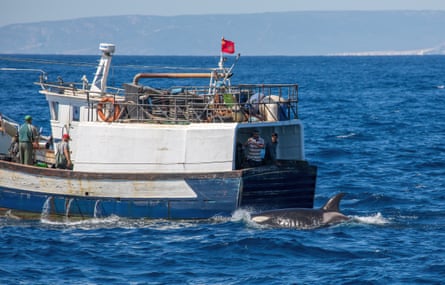
There are two fascinating things about this. First, of course, what are the orcas doing? But the second is about another species entirely: us. Why do we like this story so much? Because we do: people – including me – love the idea of orcas attacking boats. Browsing through orca memes, there’s an orca as the sickle in the hammer and sickle , with the headline “eat the rich”, and a Soviet-style graphic of a heroic orca emerging under a superyacht . “What if we kissed while watching the orcas take back the ocean,” reads one tweet with 1m views, while a much-used image of an arm holding a microphone up to a captive orca has been repurposed endlessly to highly entertaining effect – I like one where it’s “singing” a bespoke version of the Meredith Brooks classic : “I’m a bitch / I’m an orca / Sinking yachts /Just off Majorca [sic] / I’m a sinner I’m a whale / Imma hit you with my tail.” We’re taking great pleasure in projecting extremely human narratives and motivations on orcas. But how wrong is that, and why does it appeal?
The first question is easier to answer, or rather not to answer: we don’t know what they’re doing or why. “What I think is most exciting about this is that actually, we don’t know at all,” says Tom Mustill, a biologist and film-maker, who wrote How to Speak Whale , after a humpback whale landed on his kayak (the jaw-dropping footage is on YouTube ). “When we step outside our rush to project, it’s actually very reflective of where we’re at with cetacean sciences: we’re starting to understand that they’re so complicated and nuanced, and that individuals are very different from one another.” Even if we’re in the conscious incompetence phase of learning about orca behaviour, there are expert theories. “It could be a curious and playful behaviour,” suggests the 2021 report from the Grupo Trabajo Orca Atlántica (GTOA, or Atlantic Orca Working Group) , a partnership of Spanish and Portuguese scientists.
That’s a popular hypothesis that Philip Hoare , the author of Leviathan and Albert and the Whale , broadly supports. Hoare experienced his own orca interaction in Sri Lanka, when a small pod head-butted and charged his boat: “I have never been so excited and so fearful in my life,” he tells me. “They’re tremendously powerful, incredibly intelligent, incredibly well organised; if that species wanted to do anything with us in the ocean, they could.” There are no reported instances of wild orcas killing people, but, says Mustill: “If killer whales wanted to start attacking people, disabling small vessels is a very strange way of going about that. They could just start eating swimmers all over the place.”
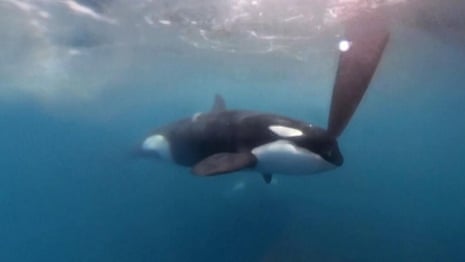
There are alternative theories. The fibreglass hulls of sailing boats might just feel nice – and orcas enjoy the sensory feedback: some Canadian pods seem to enjoy rubbing themselves on smooth pebbles ( you can watch them on a webcam ); or it might just be a trend. As Mustill explains, a number of observed orca fads are not obviously examples of “adaptive” behaviour (meaning “useful”) – most famously the one for wearing salmon as hats . They’ve also mimicked sea lions , and some pods engage in “greeting ceremonies”, described as like “a killer whale mosh pit” . Social learning – from each other – is well documented in orca culture and, yes, “culture” is how behavioural science describes it. “These are cultural beings,” says Barbara J King, professor emerita of anthropology at the College of William & Mary, Virginia, and author of Animals’ Best Friends . “The networks of individuals in orca societies, which are led by females, are highly attuned to each other’s behaviour, so traditions evolve over time that become, in some cases, cross-generational.”

But how about revenge, as many of the memes suggest? The Atlantic Orca Working Group 2021 report also suggested the interactions might be responding to individual orcas’ experiences: “A behaviour induced by an aversive incident, and therefore a precautionary behaviour.” Given a single “matriarch” orca, “White Gladis”, appears to have started these interactions , it has been suggested a prior injury or entanglement could have led her to act. Does that make it revenge? King doesn’t dismiss the idea out of hand. “If we’re talking about capacity, it’s not outside the realm of reasonable expectation and it would not necessarily be anthropomorphic,” she says, though, “I’m not suggesting this in support of an ‘uprising’ at all.” King has worked extensively on animal grief: her Ted talk on one orca, Tahlequah, who in 2018 carried her dead calf for 17 days and 1,000 miles , has had 3.5m views. “I don’t believe grief is a human emotion; I feel the same way about joy and sorrow. So what about revenge?” She points to narratives around elephants perpetrating destructive acts , which has also been presented as possible retribution for poor treatment. “Both orcas and elephants have the memory capacity and the intelligence to put these things together.” Some primates, she says, also use “kin-redirected aggression: where if a monkey is attacked, that monkey within a short period of time redirects aggression to the relatives of the opponent.”
Orcas, Hoare says, will have a clear sense of what humans have done to their environment. As demonstrated by the actions of White Gladis , orca society is matriarchal, and females can live to 100: “They will have a memory, almost a generational memory, of a time when the ocean was not dominated by human beings; when there were not seismic surveys, steam engines then diesel engines, military sonar … The most important thing for them is sound: there will be individual whales that remember when the sea was not that noisy.”
So they know what we’ve done and we know what we’ve done too. I think one of the reasons the #orcauprising resonates is our sense of collective guilt or, as Mustill puts it, “We feel like there’s something deeply unfair happening in the ocean.” From films such as Free Willy to Blackfish , we have become aware of how grotesque the idea of keeping captive orcas is, and we’re ever-more conscious of the degraded state of our seas. Hoare says pictures of the Iberian whales suggest they are in poor condition, with ribs showing on one of the most widely used pictures. “They’re skinny. They are signifiers of this massively impacted environment.” As Grimes tweeted : “We deserve to have our boats rammed, frankly.”
King is frustrated that our response has been typified by the silliness of social media posts. “If people truly believe that this is about orcas responding to human harms, then why isn’t the response not just this jokey ‘orca uprising’?” she asks. “Why isn’t this the moment that people say: ‘Whatever the orcas are doing, I recognise anthropogenic harms. This is an opportunity for me: I’m going to stop eating their prey; I’m going to support ocean restoration; I’m going to support the idea of marine sanctuaries for captive orcas’?”
But fitting their behaviour to a narrative that suits us is entirely in keeping with our perennial misunderstanding of cetaceans. Hoare sees these interactions and our reaction to them as representative of how, over our shared history, “whales have had to change according to what we want them to be.” We’ve always imposed a narrative on whales, he explains, from their appearance in creation myths and religious texts, coupled with a view of whales as terrifying monsters, reinforced by Moby-Dick . The “utter and absolute depredation of whale populations” of the early 20th century was eventually countered by the early conservation movement and, crucially, bio-acoustician Roger Payne’s Songs of the Humpback Whale , shifting our perception of them from monstrous killers to mystical barnacled angels that sing. We see them, as Mustill says, as “incredible, empathic, beautiful”, which is also an oversimplification. A friend, he says, was recently rhapsodising about orcas. “I said: ‘You know they also toy with sea turtles and, like other cetaceans, they do infanticide?” Both Hoare and Mustill note that their rebranding from “killer whale” to “orca” was not particularly popular with scientists, as it was an accurate name for consummate predators. “Maybe they’d like to be thought of as killer whales?” says Mustill. “I’ve seen them hunting and they do these things which look like celebrations – they’re active, they leap out of the water and make a lot of noise splashing. It’s not necessarily a shameful thing to kill.”
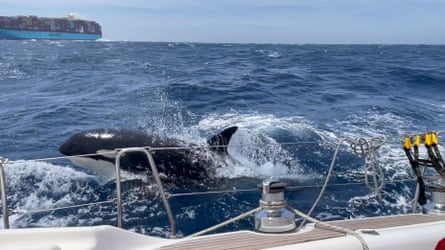
One very human-coloured notion is the idea that orcas aren’t just taking back the ocean but are somehow fomenting revolution, since the yachts they are ramming are so intimately associated with the ultra-wealthy. White Gladis has been called “a communist orca”. As one post reads : “The orcas have done more for the working class than our elected officials ever have”; another captions the famous John Cusack boombox scene from Say Anything : “Me standing outside the yacht club playing orca sounds.” It’s silly, but so appealing. “I must admit it’s very attractive,” says Hoare, though he emphasises that he doesn’t want to see anyone hurt. “I love it too,” says Mustill. “We see something intrinsically fair in these giant, clever, enigmatic killers righting a wrong.” There’s also a sense of wish fulfilment. “It speaks to our feeling of powerlessness,” says Mustill. “We’ve not been going out sinking billionaires’ yachts, even though we could.”
“The killer whales are not our friends” read the headline on a much-memeified recent Atlantic article (“Jacob Stern [the author] will be the first to go in the orca revolution” as one tweeter put it ). But, if they’re not friends, what are they to us? What are we to them? Could we be allies? Mustill recalls a strange and wonderful story from 19th-century New South Wales in Australia, where orcas assisted a family of whalers, who were hunting baleen whales, in return for a share of the catch (the tongue) for more than 40 years. “They’re very interested in us,” says Hoare. “Every whale I’ve met, and I’ve met thousands, they’re all interested in us. Because they know there’s nothing out there in their ocean – other than other whales – that is like us. We’re talking about all this now; there’s an equivalent conversation going on in orca society. Orca are podcasting. Literally podcasting. I’ll copyright that joke!” He sends me a 10-second recording of sound captured during his own interaction with the orca pod in Sri Lanka – a complex soundscape of clicks, rasps and squeaks that gives me goosebumps. “If you could only translate that, everything that has been written about this would be rendered defunct. We’ll all be proved wrong.”
- Marine life
Comments (…)
Most viewed.
Orcas sink another boat in Strait of Gibraltar off Morocco
For years, the region’s killer whales have been bumping, biting and, in some cases, sinking boats. but many scientists caution not to ascribe motive to the animals..

The orcas have done it again.
On Oct. 31, a pod of killer whales swarmed a Polish yacht sailing in the Strait of Gibraltar. For 45 minutes, the orcas hit the vessel’s rudder and damaged the boat, according to the company that operated it. Despite rescue efforts, the yacht never made it back to shore, sinking near the entrance of the Moroccan port of Tanger Med.
“The crew is safe, unharmed and sound,” the Polish tour company Morskie Mile wrote in a Facebook post describing the demise of its boat.
Since 2020, orcas in the Strait of Gibraltar and along the Iberian Peninsula have been bumping and biting boats — oftentimes, yachts — in dozens of incidents that have frightened mariners and confounded scientists.
A recent spate of killer whales sinking boats delighted online observers who anthropomorphize the marine mammals and hail them as working-class heroes.
Are the orcas really out to get us? What to know about recent attacks.
Fishing vessels and motorboats have all had their run-ins with orcas in the region, though sailboats appear to be the most popular target, according to a 2022 study . The tour agency Morskie Mile did not immediately reply to a request for comment.
No one is quite sure what is prompting the orcas to go after vessels — whether the whales are simply being playful, or had a bad run-in with a boat in the past, prompting the aggressive behavior.
Some scientists say the incidents should not be called “attacks” at all, since the whale’s motives are unknown. Perpetuating the idea that whales are out for revenge, they fear, may lead to retaliation by boaters.
“We urge the media and public to avoid projecting narratives onto these animals,” a group of more than 30 scientists wrote in an open letter this summer. “In the absence of further evidence, people should not assume they understand the animals’ motivations.”
What we do know is that orcas are highly intelligent marine mammals that appear to learn from one another. Usually, that learned behavior is a hunting strategy, such as corralling and eating massive blue whales .
Other times, it is something stranger, such as when orcas near Seattle were observed “wearing” dead salmon as hats. Orcas, it turns out, can be victims of cultural fads, too.
One other thing is clear: Killer whales normally don’t hurt people. And humans are a bigger threat to them than they are to us.
Getting entangled in fishing gear or struck by speeding boats is a threat for all whales. With perhaps fewer than 40 individuals left , the orca population off the coasts of Spain, Portugal and Morocco is considered critically endangered by the International Union for Conservation of Nature.

Yachting World
- Digital Edition

Why have Orcas been attacking yachts? A puzzling mystery
- Elaine Bunting
- March 2, 2023
Elaine Bunting looks into the so-called 'attacks' on yachts by groups of Orcas and tries to unravel why it has been consistently happening for the last few years

Late in November last year, Sir Robin Knox-Johnston’s Farr 65 pilothouse cutter, Sanjula , was being sailed 10 miles west of Cape Finisterre in Spain when it was surrounded by orca whales. The collisions began immediately.
“A pod of seven to 10 orcas surrounded Sanjula and then began to barge into its rudder. This eventually broke a steering connecting rod. The engine was switched off and the boat lay hove-to while the emergency steering was rigged,” he reported. “After 10 minutes the orcas moved away, no longer finding a hove-to yacht interesting – but that is only an assumption. The boat sailed to Vigo for repairs.”
The incident was the most high profile yet of what has amounted to hundreds of interactions, or attacks, by killer whales off the coasts of Spain and Portugal since they were first reported nearly three years ago.
The incident involving Sanjula happened just a few weeks after the loss of a French Oceanis 393 , Smousse , 14 miles west of Viana do Castelo. Orcas tore Smousse ’s rudder by mouthing and shaking it, cracking the hull in the process. The four crew were forced to abandon to a liferaft, and were picked up by another yacht.
Close encounters between orcas and yachts were extremely rare occurrences until something very strange happened – in July 2020 the behaviour of a small sub-population of orcas off the coasts of Atlantic Spain and Portugal suddenly changed. They began to barge yachts seemingly aggressively, often causing serious damage to the boats’ rudders.

A towed dinghy could become a target for orca play. Photo: Jon Wright
Reports mounted up as the behaviour kept being repeated, and these incidents spread north, marking the orcas migratory route north along the Iberian peninsula to Galicia, where they feed on bluefin tuna and nurse their young. Whether these were play behaviours or attacks wasn’t clear but it involved repeated ramming of boats, and those who experienced them were terrified.
Delivery skipper Pete Green was delivering an Amel 52 from Gibraltar to the UK in 2020 when the yacht’s rudder spun uncontrollably from side to side.
“We knew there was a risk of meeting some orca so we stayed close to the Spanish coast, but we didn’t see them coming,” says Green, managing director of Halcyon Yachts. “The wheel was just suddenly spinning from left to right as they collided into the rudder.”
The crew immediately turned off all the electrics, shut down the engine, furled the sails and lay ahull. All the advice they’d seen said to sit passively in the water until the whales grew bored.
The orcas circled the Amel slowly for nearly two hours, so close at times that the crew were able to photograph and video the animals. The whole time, the orcas were bumping into the hull, the keel and hitting the rudder. “It seemed like an age before they finally left us in peace,” said Green. By the time the whales were gone, the rudder had been badly damaged.
It was not the first time Green had been on a yacht picked on by orcas. A year earlier, while close to A Coruña on the north-west corner of Spain, the Hallberg-Rassy 36 he was delivering to the UK was “rammed at least 15 times”. The yacht lost steering and had to be towed into port.
These encounters have become an established hazard along this coast. According to reports received and collated by the Cruising Association in conjunction with Grupo Trabajo Orca Atlántica, there were 102 interactions with orcas between January 2022 and January 2023, the majority of them off Cape Finisterre, west of Sines in Portugal, and in the Strait of Gibraltar. See the interactive map, which includes witness reports, at theca.org.uk/orcas/reports

Orcas chewed off this lump of rudder. Photo: Martyn & Zoe Barlow
Some of these resulted in damage, mainly to the rudder, and in a small number of cases it was serious. Some crews say they felt these were aggressive attacks, others viewed it as merely playful. The intent to barge the vessel and try to alter its course was, however, not in doubt.
A rogue group
Dr Ruth Esteban, a marine mammal researcher who works for the Madeira Whale Museum, has spent years studying the abundance, life history and social structure of orcas in the Strait of Gibraltar. The group of whales in question is a small one, she believes, just five pods comprising 28 individuals. It’s an endangered sub-population she knows well and she was both fascinated and alarmed by this bizarre evolution.
Article continues below…

Orca attacks: Rudder losses and damage as incidents escalate
The first signs that something odd was taking place came in July 2020. After the strangest start to a summer…

Whale encounter – there seems to be an increasing number of collisions with whales as yachts get faster
The first I heard about a sailing boat colliding with a whale mid-ocean was when the 49ft sloop Peningo…
“The orcas were more than used to being surrounded by vessels, sometimes hundreds of vessels at a time, but were never as far as we knew touching the vessel,” she says. “Then when 2020 arrived, after the worldwide lockdown, [this] disruptive behaviour was observed. They were reported interacting with boats and entering into contact with them, particularly sailing boats, resulting mainly in breaking the moving parts of their rudders.”
Since the incidents began, Dr Esteban has collected and reviewed videos taken on board some of the yachts that had been targeted and damaged, meticulously identifying each animal where possible and reviewing the whales’ behaviour. They were mainly juveniles, but there was at least one adult involved, the mother of one of the younger animals.
She observed that they were purposely targeting boats and trying to push them around by pushing or biting the rudder. “We could see the animals come close to the boat at the stern. Sometimes they showed up with intense bubbling. They would approach and start by observing moving parts before touching and pushing to control the movement of the boat.”
The whales mainly targeted sailing yachts under 15m, although some fishing boats, RIBs and motorboats were also attacked. In one case, they broke a yacht’s rudder in half. In another, a yacht crew endured repeated collisions for over an hour as the orcas repeatedly struck their rudder, breaking it and bending the stainless steel shaft by almost 90°. “The cost to repair was almost €21,000,” says Dr Esteban.

Orcas can live in all oceans of the world and are the second most widely distributed mammal on earth. Photo: Mike Korostelev/Getty
A group of working biologists and conservationists from organisations such as the Whale Museum of Madeira, La Rochelle university and the Portuguese Sociedade de Vida Selvagem was formed to investigate this behaviour.
Grupo Trabajo Orca Atlántica ( orcaiberica.org ) collates information on orca attacks, plots where they occur and promotes the conservation and management of the whales. It also offers advice aimed at mitigating damage to yachts or the animals themselves, the so-called orca protocol.
The behaviour, sporadic at first, has become an established set piece for the whales, and it has evolved. It has been going on now for three years, and there is no sign of this behaviour fading. It has become a natural behaviour for this population, and there is no evidence at all that they themselves are acting aggressively.
What can crews do?
If possible, avoid the areas of recent activity. The Spanish authorities set out two exclusion zones last year for vessels under 15m near A Coruña and on the approaches to Gibraltar on a stretch from Bolonia near Tarifa, to Cape Trafalgar. GT Orca Atlántica publishes a map on its website of current orca activity, valid for 24 hours, with the risk expressed in the form of traffic lights. This is based on the latest reports from boat crews and rescue services.
If targeted, GT Orca Atlántica advises stopping your yacht to make your vessel look unexciting and try to quell the whales’ prey drive. They suggest taking your hands off the wheel or disengaging the autopilot to allow the rudder to turn freely and advise crew not to shout at the animals, throw anything at them, ‘and do not let yourselves be seen excessively from overboard’.

Orcas circle a Sun Odyssey 40. Photo: Martyn & Zoe Barlow
But when faced with a pod of orcas and the prospect of hull or rudder damage, some crews have tried to scare them off. “We decided to go against protocol and bang metal tools against our metal railings and stanchions,” says a skipper who encountered the animals last summer.
“That seemed to deter them for about 10 minutes, then they returned. They carried on trying to get as close as possible to the stern again, so we started to play loud music on a portable speaker, banged pots and pans, and waved black and white striped towels off the stern. After a few minutes they left us alone, but the daylight was also dying by then and we can’t figure out if our deterrents worked or if they got bored.”
Some crews have kept bottles of diesel within reach in the cockpit just in case, ready to pour down the cockpit drains in case they are approached by orcas. The theory is that the orcas will be repelled by the mixture emerging underwater from the yacht.
Other crews have tried pouring sand into the water. Some even less humane methods have also been reported, such as crews letting off firecrackers or firing live rounds into the water. These do seem risky, and – aside from the issues of harming a protected marine species – no one can say whether any of these deterrents work.

A bubble curtain created by orcas circling beneath the surface
Three years on from the first reports of this animal behaviour, orca encounters off the Spanish and Portuguese coasts have become an accepted hazard. According to reports collected by GT Orca Atlántica, there were 239 cases of interactions with orcas between 2020 and 2021.
Social media and press reports have hugely amplified the issue. Considering the overall numbers of yachts on passage through these waters, thousands each summer, the percentage of boats affected is still small.
However, it seems unlikely this behaviour will extinct itself – its repetition proves the orcas find it self-rewarding. Are the orcas merely playing? Are they practising hunting behaviours? Are they reacting to stress or changes in food sources? Have pollutants affected them cognitively?
All these theories have been put forward, but no one knows. “Everyone is puzzled,” says Dr Esteban. “We don’t know what is going on and we do not know why they’re doing this. There have been a lot of hypotheses but none of them is based on clear evidence.”
From a yachtsman’s point of view, the reasons really don’t matter. The orcas’ behaviour has evolved, and will presumably continue until it serves no purpose. In the meantime, reported encounters will allow researchers to build up a more detailed picture of the areas of activity, types of boats targeted and successful deterrents, if any. Until then, many cruisers believe the only thing to do is to coast-hop Spain and Portugal while monitoring areas where the orca pods are reported to be hunting.
If you enjoyed this….
Yachting World is the world’s leading magazine for bluewater cruisers and offshore sailors. Every month we have inspirational adventures and practical features to help you realise your sailing dreams. Build your knowledge with a subscription delivered to your door. See our latest offers and save at least 30% off the cover price.
Orcas Won't Stop Attacking Boats. They Officially Have Our Attention.
Another killer whale has attacked a yacht in Spain, prompting some to wonder if orcas are teaching their young to ram boats.
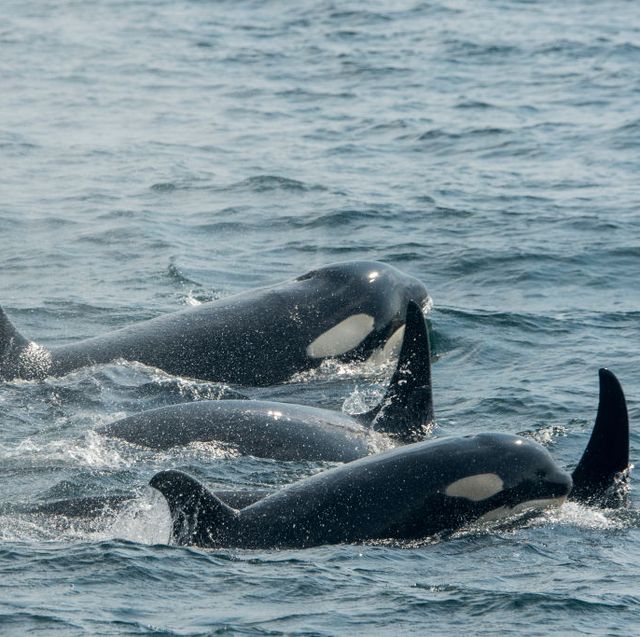
- For the past 18 months, orcas have been attacking boats and yachts in the Mediterranean Sea near the Strait of Gibraltar.
- A new report of an orca boat attack in the North Sea near Scotland is a surprising development.
- It's possible that the orcas are displaying “cultural evolution” and other pods are learning behaviors from one another
Now, the majestic orca ( Orcinus orca ) is under scrutiny for the same kind of behavior, as boats in the Mediterranean near the Strait of Gibraltar—and surprisingly, off the coast of Scotland in the North Sea—appear to be specifically targeting boats. Although this behavior was well-known in the Iberian orca population, it’s a shocking development that orcas seemingly unaffiliated with the Mediterranean pod are exhibiting similar behaviors.
“I’d be reluctant to say it cannot be learned from [the southern population],” Conor Ryan, a scientist who’s studied orca pods off the Scottish coast, told The Guardian . “It’s possible that this ‘fad’ is leapfrogging through the various pods/communities.”
Despite being known as “killer whales,” orcas are actually members of the dolphin family and are highly sociable, using complex vocalizations to communicate with one another. The learn matrilineally, meaning “grandmother” orcas (which can live for 80 years or more) become matriarchs of their pods and pass on vital hunting skills.
With three boats sunk and upwards of 100 others damaged in Iberia, scientists think that this behavior may come from one such “grandmother” orca named White Gladis . The thought is that she may have survived a traumatic event earlier in life involving a boat, and has since taught her pod how to attack them. It’s also possible that these attacks are timed with Atlantic bluefin tuna ( Thunnus thynnus ) migrations , and the orcas perceive boats as competition for food.
Of course, humans are not necessarily innocent victims in these orca hit-and-runs, as boats cause noise pollution and other hazards for the creatures and other marine life. But, regardless, how exactly did an orca in the North Sea learn this seemingly isolated behavior from 2,000 miles away? Some scientists think that highly mobile pods could be capable of teaching these boat-destroying tricks to individuals in other pods.
So, will orcas always be on the hunt for boats and yachts of all shapes and sizes? Well, not necessarily. As seemingly easy as it was for the orcas to pick up this hunting trick, it’s possible that this “cultural evolution” will disappear just as rapidly. Similars shifts have happened before. For example, the website Salon reports that, a few years back, bottlenose dolphins were carrying sea sponges on their noses of the coast of Australia . But as quickly as this “fad” appeared, it became scarce, and soon disappeared entirely.
Scientists don’t know how long this particular “cultural evolution” will stick around. But considering our bang-up job protecting the planet, it almost feels like there’s a measure of justified cosmic karma at play here.
Darren lives in Portland, has a cat, and writes/edits about sci-fi and how our world works. You can find his previous stuff at Gizmodo and Paste if you look hard enough.

.css-cuqpxl:before{padding-right:0.3125rem;content:'//';display:inline;} Animals .css-xtujxj:before{padding-left:0.3125rem;content:'//';display:inline;}
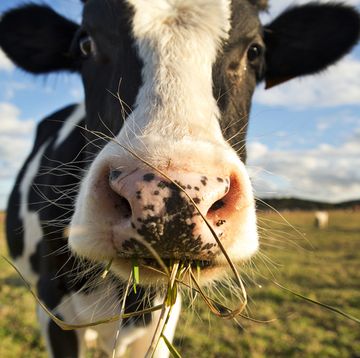
49 Killer Whales Are Reshaping the Ocean

Rancher Used Exotic DNA to Create a Super Sheep

Chernobyl Worms Seem to Have Conquered Radiation

A Newly Created Superpig Is Here to Save Our Bacon
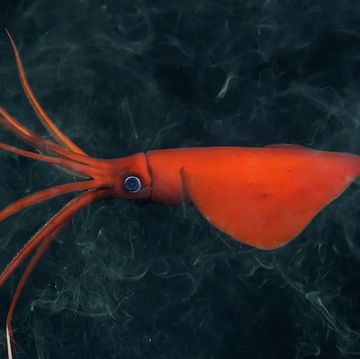
Scientists Just Discovered 100 New Life Forms

The Wolves of Chernobyl Have Evolved
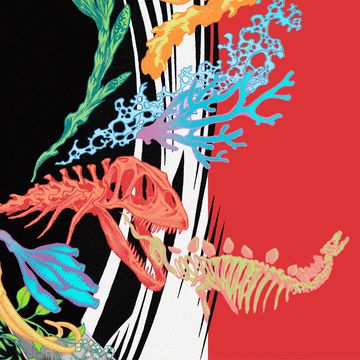
A Feast for the (Geologic) Ages
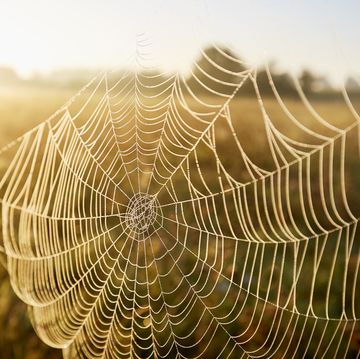
Spiderwebs Are a Lifeline for Endangered Species
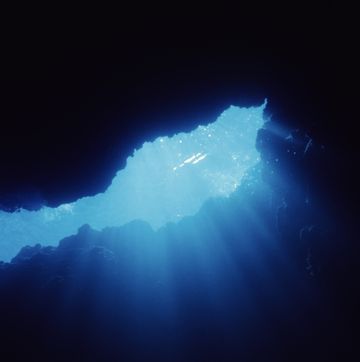
4 Black Eggs Have Surfaced From the Deep Ocean

Some Animals Are Desperately Turning Nocturnal

Scientists Cloned A Monkey. Now It’s All Grown Up.
Watch CBS News
Killer whales sink yacht after 45-minute attack, Polish tour company says
By Emily Mae Czachor
November 6, 2023 / 9:58 AM EST / CBS News
A group of orcas managed to sink a yacht off the coast of Morocco last week, after its 45-minute attack on the vessel caused irreparable damage, a Polish tour company said.
The incident happened Tuesday, Oct. 31, as a crew with the boat touring group sailed through the Strait of Gibraltar. The narrow waterway bridges the Mediterranean Sea and the Atlantic Ocean, which separates the southern tip of Europe from northern Africa.
A pod of orcas, colloquially called killer whales, approached the yacht and "hit the steering fin for 45 minutes, causing major damage and leakage," the tour agency Morskie Mile, which is based in Warsaw and operated the yacht, wrote on Facebook in a translated post.
Although its captain and crew were assisted by a search-and-rescue team as well as the Moroccan Navy, the yacht could not be salvaged. It sank near the entrance to the port of Tanger-Med, a major complex of ports some 30 miles northeast of Tangier along the Strait of Gibraltar. None of the crew members were harmed, said the Polish tour agency, adding that those on board the sunken yacht were already safe and in Spain by the time their Facebook post went live.
"This yacht was the most wonderful thing in maritime sailing for all of us. Longtime friendships formed on board," wrote Morskie Mile. The company said it was involved in other upcoming cruises in the Canary Islands and would work to make sure those boat trips went ahead as planned.

Last week's incident in the Strait of Gibraltar was not the first of its kind. Reported attacks by killer whales that seem to be trying deliberately to capsize boats off the coast of Spain and Portugal have more than tripled over the last two years, according to data released in the spring by the research group GTOA, which studies orcas around Gibraltar.
"Nobody knows why this is happening," Andrew W. Trites, professor and director of Marine Mammal Research at the University of British Columbia, told CBS News in May. "My idea, or what anyone would give you, is informed speculation. It is a total mystery, unprecedented."
GTOA recorded 52 maritime interactions with orcas between the Strait of Gibraltar and Galicia, a coastal province in northwestern Spain, between July and November 2020. The incidents picked up in the years that followed, with 197 interactions recorded in 2021 and 207 recorded in 2022, GTOA said, noting that the interactions mainly affected sailboats.
Then, in June of this year, one of two sailing teams involved in an international race around the world reported a frightening confrontation involving multiple orcas as they traveled through the Atlantic Ocean to the west of Gibraltar. The teams, which were competing in The Ocean Race, said the orcas did not damage their boats or harm crews, but recalled the sea creatures pushing up against and, in one instance, ramming into one of the boats. The orcas also nudged and bit the rudders, one crew member said.
Caitlin O'Kane and Kerry Breen contributed to this report.
Emily Mae Czachor is a reporter and news editor at CBSNews.com. She covers breaking news, often focusing on crime and extreme weather. Emily Mae has previously written for outlets including the Los Angeles Times, BuzzFeed and Newsweek.
More from CBS News

What we know about the Moscow concert hall attack blamed on ISIS

4 accused in Russia concert hall attack appear in court, looking badly beaten


Russia observes national day of mourning as concert hall attack death toll climbs
Ukraine had no involvement in russia concert hall attack, u.s. says.
Premium Content
Rogue orcas are thriving on the high seas—and they’re eating big whales
A fourth type of Pacific killer whale may live miles offshore from California and Oregon, preying on whales, other dolphins, and sea turtles.

Most orcas tend to stick to coastlines, from the Antarctic dwellers that make waves to knock seals off ice floes to the liver-extracting brothers around Cape Town . But now, scientists have found what could be a brand-new population of killer whales: Animals that ply the high seas, hunting large whales and other sizable prey.
These open-ocean denizens have been spotted at numerous locations far from Oregon and California, many of them well beyond the continental shelf, where waters can reach depths of 15,000 feet, according to a recent study in Aquatic Mammals .
“There haven’t been any real studies, at least in the North Pacific, looking at killer whales in the open ocean,” says study leader Josh McInnes , a master’s candidate at the University of British Columbia’s Institute for the Oceans and Fisheries.
“It was kind of a shock when … we saw animals that were out in this open ocean habitat and were completely different from the other ecotypes we know.”
Killer whales in the Pacific are grouped into three ecotypes: Residents, which live close to shore and eat salmon and other fish; offshores, which live farther out and also eat fish; and transients, also called Bigg’s, the only orcas previously known to eat mammals. (See 13 fantastic photos of orcas.)
Scientists could not match the 49 whales in the new study with any known orcas through photos and descriptions, which are based on their unique dorsal fins and saddle patches, the gray or white pattern on an orca's back.
This means the animals are either a subgroup of the transient ecotype or an entirely unique population, says McInnes, who is also a research associate with the Pacific Wildlife Foundation.
The team could also differentiate the population, dubbed the oceanics, from other known orcas due to scars or bite marks from the parasitic cookie-cutter shark, which only occur in the deep ocean.

Beyond individual variations, the oceanics don't look like other known ecotypes, for example sporting a large gray saddle patch or no saddle patch at all.
“The open ocean doesn’t support a lot of large predators; it’s often described as a giant desert, so we weren’t expecting to find so many different animals, so we’re excited to carry on more research,” McInnes says.
“We really just don't know yet what is happening with the killer whales in the open ocean. This is the mystery behind what we hope to do next.”
Following the prey
Our knowledge of orcas living in the open ocean is limited, as it’s difficult to find the widely distributed animals in a boat.
Yet the recent paper, a mixture of literature review and new observations, discovered nine instances in which marine mammal researchers, fishermen, and tourists observed whales in the northern Pacific Ocean between 1997 and 2021.
In the first documented incident, researchers watched a large pod of killer whales attack a herd of nine adult female sperm whales, managing to separate one from the pack and kill it. Other pods also hunted and ate an elephant seal, a pygmy sperm whale, a Risso’s dolphin, and a leatherback sea turtle.
With detailed records from each such encounter, the researchers plotted geo-referenced locations, determined water depth, and compared photos in databases to determine that the 49 whales sighted could potentially be a new ecotype.
It’s possible that this new population formed as prey drew them farther from shore.

“Mammal-eating killer whales are doing well, and their numbers are increasing as seal and other whale populations have rebounded since whaling and sealing became illegal,” says Robert Pitman , a marine ecologist at Oregon State University’s Marine Mammal Institute, who wasn’t involved in the study.
While prey overall is less abundant in deep-sea waters, killer whales may still find that habitat is more appealing than competing with the larger populations of resident whales closer to shore, he says. (Watch video: sperm whales vs. orcas.)
To this end, McInnes and colleagues hope this study will spark efforts to document the new whale population through genetic sampling, satellite tagging, acoustic tracking, further photo identification, and additional field observation.
Climate change is affecting some populations of killer whales , such as those in Antarctica, which depend on seals that live on the rapidly decreasing ice. On the U.S. West Coast, a decline in salmon has reduced a population off Puget Sound , Washington.
Worldwide, however, the species is thriving, and coming more into contact with people in coastal areas. Orcas ramming and even sinking boats off Spain made headlines in 2023, with some people rooting for the animals as fighting back against human domination .
“Killer whales are probably the most widely distributed vertebrate on the planet. They are everywhere,” Pitman says.
With many tourist cruises available worldwide, he encourages everyone to put seeing a killer whale, whose males can reach lengths of 27 feet, on their bucket list.
“This is the biggest apex predator we have on the planet today. We haven't seen anything like it since dinosaurs roamed the Earth.”
Related Topics
- ORCA (KILLER WHALE)
- ANIMAL ATTACKS
- SPERM WHALE
You May Also Like

Orcas are killing porpoises—but not eating them. Why?
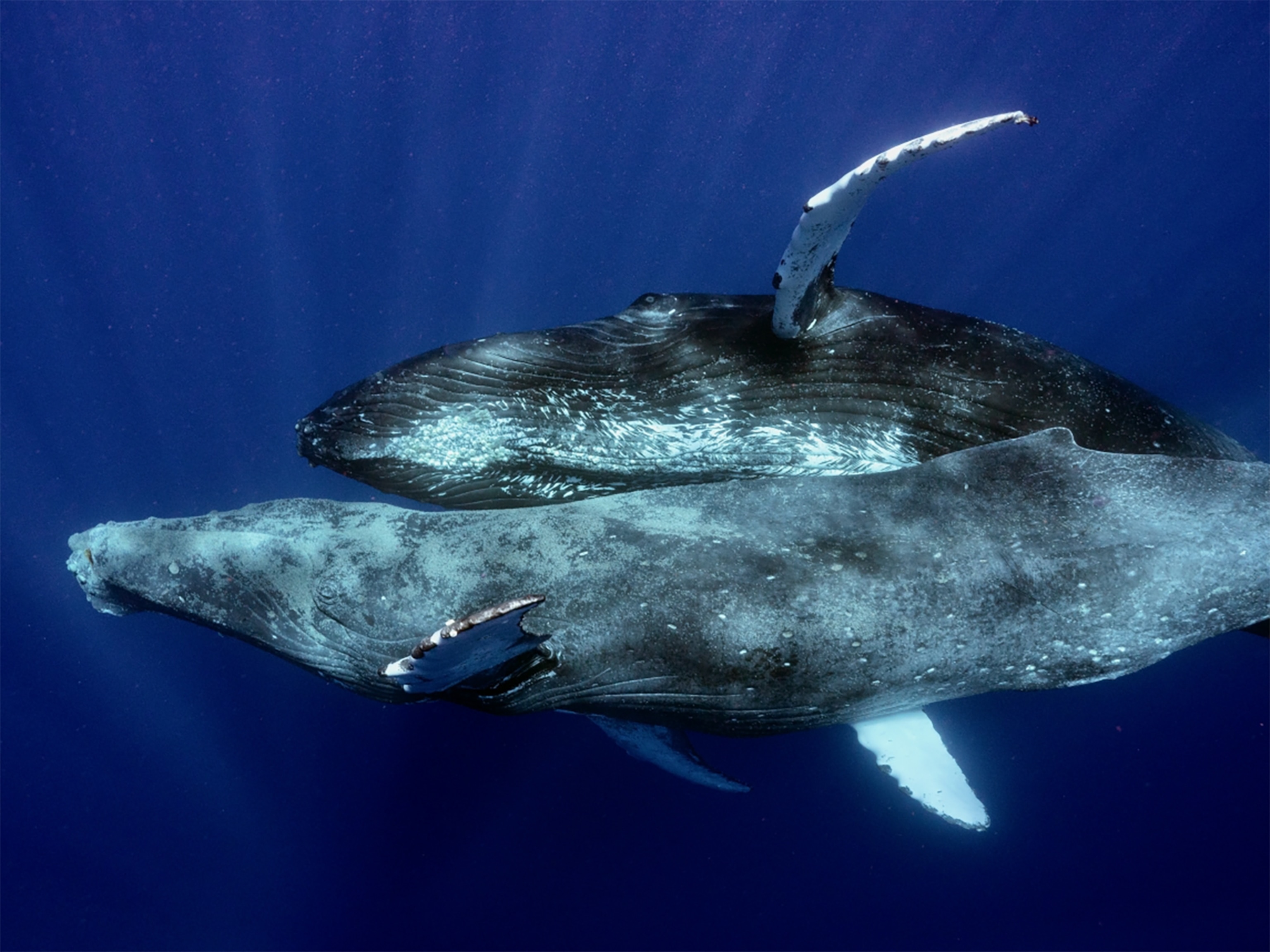
First-ever photos show humpback whales mating—and they’re males
Single orca seen killing great white shark for first time ever

This video captures a rarely seen sperm whale birth. It’s beautiful.

Menopause is very rare among animals. Here’s why orcas go through it.
- Photography
- Environment
- Paid Content
History & Culture
- History & Culture
- History Magazine
- Women of Impact
- Mind, Body, Wonder
- Terms of Use
- Privacy Policy
- Your US State Privacy Rights
- Children's Online Privacy Policy
- Interest-Based Ads
- About Nielsen Measurement
- Do Not Sell or Share My Personal Information
- Nat Geo Home
- Attend a Live Event
- Book a Trip
- Inspire Your Kids
- Shop Nat Geo
- Visit the D.C. Museum
- Learn About Our Impact
- Support Our Mission
- Advertise With Us
- Customer Service
- Renew Subscription
- Manage Your Subscription
- Work at Nat Geo
- Sign Up for Our Newsletters
- Contribute to Protect the Planet
Copyright © 1996-2015 National Geographic Society Copyright © 2015-2024 National Geographic Partners, LLC. All rights reserved
How crafty orca whales hunt near submarine canyons
A unique subpopulation of transient killer whales switches their techniques depending on the seascape.
By Laura Baisas | Published Mar 20, 2024 2:00 PM EDT
- Environment
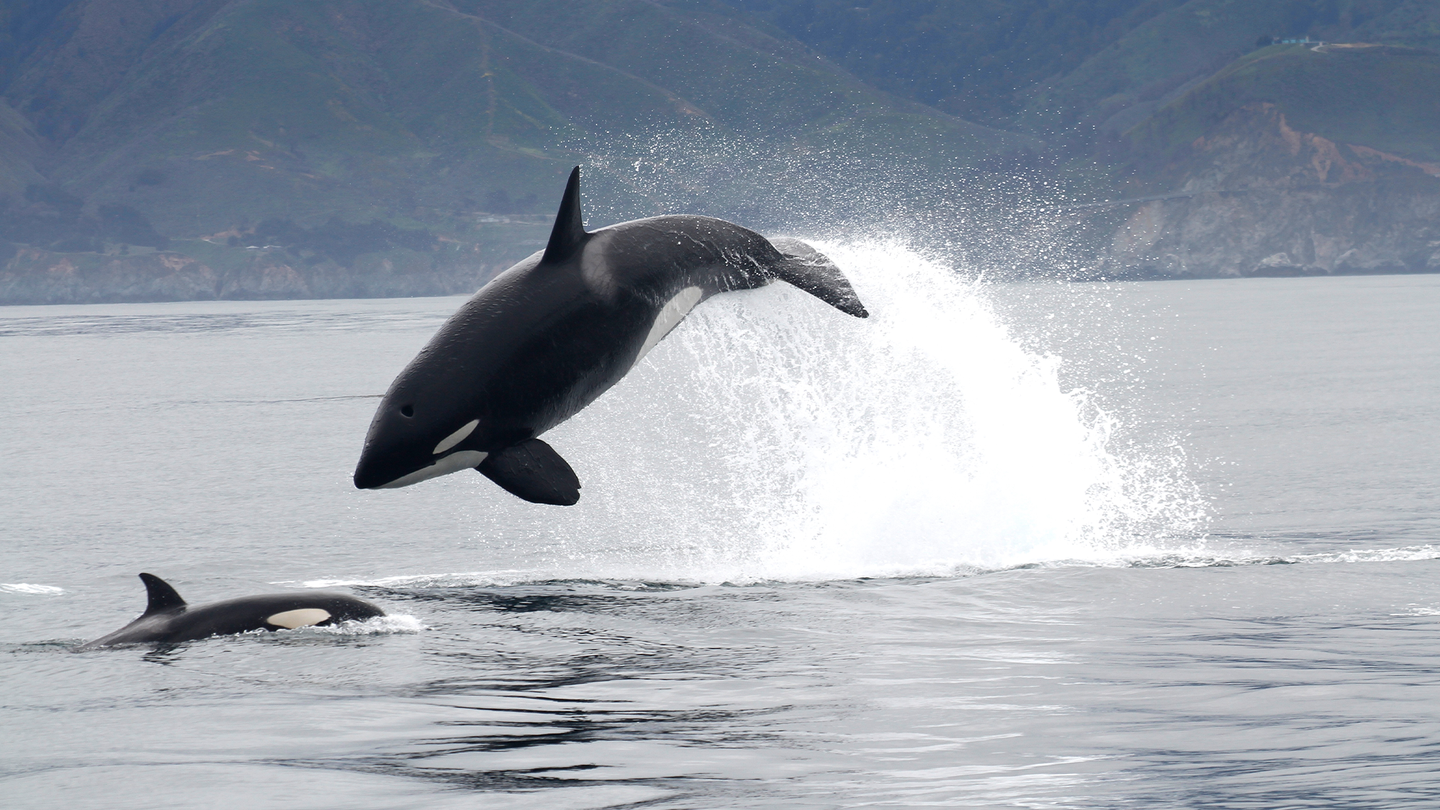
A distinct subpopulation of orca whales appears to be using specialized hunting techniques to hunt the marine mammals that they eat. Orca–or killer whales–are the ultimate apex predators , who have been observed attacking great white sharks , porpoises , and even blue whales . They are found in every ocean on the planet, and the specific environments that they live in have largely shaped their particular food preferences. The killer whales that forage near the deep submarine canyons off the California coast may use the sloping seascape to inform the ways that they catch food. These findings are described in a study published March 20 in the open-access journal PLOS ONE .
Residents vs. transients
Groups of orca whales can form different populations or ecotypes. They have their own social structures , food preferences, and hunting techniques. Resident killer whales , like the three endangered pods that spend the summer and fall months in and around Puget Sound near Seattle, Washington exclusively eat salmon and have a more round dorsal fin.
[Related: Orca observed hunting and killing a great white shark by itself for the first time .]
The other type of killer whales called transient killer whales specialize in hunting marine mammals. Transients are typically slightly larger than resident orcas have a more pointed dorsal fin.
The transients that forage in the Northern Pacific Ocean can also be further divided into two groups. The inner coast whales feed in shallow coastal waters, while outer coast whales hunt in deeper water. Most studies have focused on the orcas that hunt closer to shore and not much is known about the foraging techniques for the more offshore whales, such as those near the Monterey Submarine Canyon in California.
“Monterey Bay provides a conducive environment to investigate transient foraging ecology and behavior, due to it having a large deep submarine canyon system occurring close to shore that is accessible to researchers,” study co-author and University of British Columbia marine ecologist Josh McInnes tells PopSci .
Two distinct foraging behaviors
McInnes and his team looked at the outer coast transient killer whales that foreage around the undersea Monterey Canyon, which is one of the deepest in the United States. They compiled and analyzed data from marine mammal surveys conducted between 2006 and 2018 and whale-watching ecotours between 2014 and 2021. The whales mainly ate California sea lions , gray whale calves, and northern elephant seals.
The orcas were observed using two different foraging behaviors that appear to be unique to these more offshore transients. When foraging open water, the groups spread out and searched independently for marine mammals to eat. Each whale would also surface at a different time.
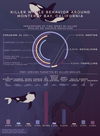
However, if they were looking around the deep submarine canyons and shelf-breaks, groups of whales would search for prey following the contours of the canyon. The group would also surface at the same time.
According to McInnes, both foraging behaviors appear to be unique to these whales from the other transient groups that hunt in shallow water.
[Related: Raising male offspring comes at a high price for orca mothers .]
“Their ability to locate and follow the contours of the canyon was surprising based on our focal follow surveys,” says McInnes. “We hypothesize that transient killer whales hunting in submarine canyons may listen to water being upwelled along the continental slope or shelf-break.”
Ramming or punting sea lions
The orcas also deploy special techniques if their prey couldn’t be easily cornered in open water. They subdued their prey by ramming into them with their head or body– as some orca do to boats . The whales also used their powerful tails to hit or launch sea lions out of the water and into the air.
McInnes and the team believes that these outer coast whales are a distinct subpopulation that has developed these hunting techniques in such a deep water habitat. It’s also possible that these foraging behaviors may be culturally transmitted from one generation to the next. The team was surprised by their affinity for along the slopes of the canyon and shelf-break and just how much time they spent foraging and feeding.
“Transient killer whales in Monterey Bay, California spend 84 percent of daylight hours foraging (searching, pursuing, and feeding), which is a significant amount of time,” says McInnes. “Feeding appears to be related to the size of prey these whales tackle, with long hunts involving gray whale calves and California sea lions.”
McInness also said the team “really appreciate” any photographs or sightings of killer whales. Images of killer whales can be sent to [email protected] .

Laura is a science news writer, covering a wide variety of subjects, but she is particularly fascinated by all things aquatic, paleontology, nanotechnology, and exploring how science influences daily life. Laura is a proud former resident of the New Jersey shore, a competitive swimmer, and a fierce defender of the Oxford comma.
Like science, tech, and DIY projects?
Sign up to receive Popular Science's emails and get the highlights.

Sperm whales drop giant poop bombs to save themselves from orca attack
Sperm whales blasted a "big dark bubble" of poop to prevent an impending orca attack off the southern coast of Western Australia.
Scientists witnessed the clever defense strategy unfold Tuesday (March 19) during a tourist excursion in Bremer Canyon, a whale-watching hotspot off the coast between Albany and Hopetoun. They described seeing a "cloud of diarrhea" permeate the water, and this rarely seen defense mechanism seemed to help the sperm whale pod escape what could have been a fatal attack by at least 30 killer whales, ABC News Australia reported.
"It's called defense defecation," Jennah Tucker , a marine biologist with Oceans Blueprint, a marine and environmental sciences research organization, who was on the charter boat, told ABC. When the animals defecate, she said, they pass their huge tails through their poop to drive away or confuse attackers.
As the event unfolded, onlookers noticed a large, "dark bubble" pop up to the water's surface. At first, they thought it was blood from one of the sperm whales, potentially a small calf. But when the team later reviewed footage of the plume, they realized it was actually whale poop.
"Because [a] sperm whale's diet consists mostly of squid , they actually have this really reddish colored poo," she said.
Related: Why some whales go through menopause
In this demonstration of defense defecation, the pod formed a circle with their heads together, and the whales fanned their tails in unison — forcing their excrement toward the unsuspecting orcas .
"This is called a rosette, another defensive mechanism they use when they're under attack," Tucker said.
Tucker told ABC she noticed that the sperm whales looked distressed and exhausted. However, their fecal warfare worked, and the orcas swam off in search of fresher waters. It was in the midst of this mayhem that researchers saw the big, blobby poop bubble rise to the water's surface.
There have been only a few documented instances of orca attacks on sperm whales, largely due to the sheer size differential between the two species.
"Sperm whales are considered an apex predator, and historically, it was thought that they were pretty much immune to killer whale attacks," Tucker said. "It's actually pretty adventurous for orcas to try to take on sperm whales. They're punching above their weight."
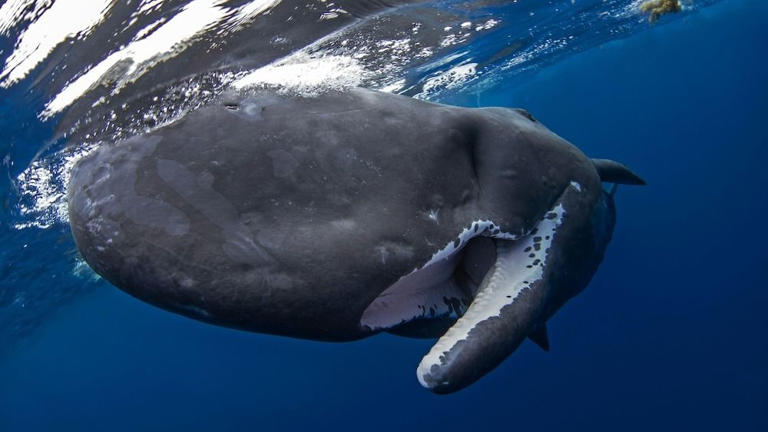
Orcas continue to stun scientists with their cunning, flipping and slapping prey with their tails
- A group of orcas off the coast of California has honed a brutal set of hunting skills.
- Trapping prey near an underwater canyon, they flip, drown, ram, and slap their targets to death.
- Killer whales are apex predators; their behavior can reshape ecosystems the fishing industry.

There's no shortage of awe when it comes to killer whales. The mysterious apex predators are continually shocking scientists with their ability to figure out creative new ways to kill their prey and shape their environment.
A new study tracking a pod of 183 killer whales off the coast of California is no exception.
These orcas found the perfect stage for an underwater ambush: a canyon in open water with steep walls, which they used to trap unsuspecting marine mammals.
"That was one of the most surprising parts of the study," Josh McInnes, a marine biologist at the University of British Columbia in Canada and an author of the study, told New Scientist .
Orcas patrolling the canyon were seen honing in on gray whale mother-and-child pairs, trapping them against the canyon walls and chasing them until the calves became exhausted.
The killer whales would then separate the calves from their mothers by body-blocking the parent and dragging the child toward open water.
There, the orcas could call reinforcements to ram the calves with their noses, flip them in the air, or slam them with their tails. Per the study, the killer whales would often finish the calves off by jumping on top of their blowholes, pinning them underwater long enough to drown.
The ordeal lasted between 1-and-a-half and 5 hours, after which the orcas would take turns feeding off the unfortunate calves' carcasses.
The behavior is "very unique, especially for this area at least," McInnes said, per New Scientist.
"We're constantly learning about killer whales. Every study that comes out is extremely valuable for our understanding of their ecology as well as their conservation needs," said McInnes.
It's not just the whales that fell prey to the orcas. Between 2006 and 2021, the scientists found that elephant seals, minke whales, and dolphins were often on the menu, per the study.
Related stories
The findings were published in the peer-reviewed journal PLoS ONE on Wednesday.
Orca-hunting behaviors aren't just cool
Learning about these animals' fascinating behaviors doesn't only satisfy scientific curiosity. It's crucial to understanding the complex puzzle shaping marine ecosystems.
Previous studies have shown that even a few orcas picking up a new hunting behavior can entirely reshape the local food chain .
That was the case, for instance, of two orcas off the coast of South Africa that chased away all the great white sharks from the Gansbaai coast. The big fish were scared off when the killer whales learned how to suck out their prey's livers with almost surgical precision — while the fish were still alive.
In the great whites' absence, lower-level predators started rising toward the top of the food chain, reshaping the local ecosystem, scientists later found.
Experts are now keeping a close eye on this unique event as the great whites are relocating. This could have cascading effects on the local fishing and tourism industries, scientists have said.
"Over two decades of annual visits to South Africa, I've observed the profound impact these killer whales have on the local white shark population," Primo Micarelli, a marine biologist who studies the orcas in South Africa, told CNN, Business Insider previously reported.
"Despite my awe for these predators, I'm increasingly concerned about the coastal marine ecology balance," he added.
It's not just the orcas' predation on wildlife that can have knock-on effects.
Portugal last year had to ban whale-watching after local killer whales took to ramming leisure boats, leaving some ships irreparably damaged.
The orcas' extreme influence on local ecosystems could also be a powerful argument to push for their protection.
Better understanding their ways helps scientists forge tactics to protect orcas from human threats , such as disturbance from shipping traffic and noise, entanglement in fishing gear, and oil spills
Watch: After a half-century in captivity, could Tokitae the orca finally be free?
- Main content
Beached orca in B.C. dies despite life-saving efforts
Intense efforts now underway to save calf.

Social Sharing
A female killer whale that beached on northern Vancouver Island died on Saturday despite efforts by the community to push the mammal back into the water.
Video of the incident , which occurred near the village of Zeballos on the island's northwest coast, shows dozens of people trying to save the stranded orca.
The female orca was stranded on shore in Little Espinosa Inlet, about six kilometres southwest of the village, at low tide while a calf swam nearby, said Florence Bruce of the Ehattesaht First Nation.
Intense efforts are underway to reunite the orca calf with its family.
Bruce and her fiancé, Kyle Harry, were among a dozen or so people present for the rescue effort.
"The whale was giving a really big fight before it passed away," Bruce told CBC News.

The group tried to roll the mammal onto its belly and provide it with as much water as they could for about two hours before it breathed its last breath, Bruce said.
"I am so sad inside. It's kind of like I lost a relative," she said.
Harry sang a prayer song for the departed orca.
"Other nations are also coming together on Facebook Live and singing their songs for [the orca] too," he said.
While the circumstances around the stranding remain unclear, Marine Education and Research Society (MERS) — a conservation charity based in Port McNeill — speculates the orca may have ventured ashore during a high tide, possibly for hunting purposes.

In a social media post, the society said the area where the incident took place "is highly influenced by changes in tides."
"When the tide ebbs in this particular spot, it happens very quickly," the society wrote.
The calf, which remained near its deceased mother, faces an uncertain future.
In its post, MERS said its survival depends on various factors including its age and "the family structure of these whales."
Search continues to reunite baby orca with pod
The Fisheries Department says in a statement that a highly complex operation is underway to entice the juvenile whale in the lagoon to rejoin its pod, but "time is of the essence."
Following its mother's death, the calf stayed nearby, but the department says the whale needs to make its way to the open ocean to find its family pod.
.png?crop=1.777xh:h;*,*&downsize=510px:*510w)
Killer whale calf stranded after mother dies
Marine mammal rescue officials in the department, area First Nations leaders, scientists and volunteers are all in the area to help save the calf, which is about two years old.
A Facebook post from Judae Smith , who oversees operations and maintenance in the Nuchatlaht First Nation's fisheries department, says they are also looking for the pod of killer whales.
"We have six [boats] going out to look to bring the baby to the pod," Smith posted on Facebook Saturday.

MERS said in a social media post that the dead animal has been identified as a 15-year-old Bigg's killer whale, given the designation of T109A3, and she had a calf in 2022.
- Orca group seen hunting ocean's largest predators: UBC study
Jared Towers, executive director of non-profit Bay Cetology, said they are planning to coax the calf out of the lagoon.
"Fortunately, it's making a lot of loud calls and if it can swim out on its own at high tide ... it can continue to call and hopefully find its extended family and be adopted."
With files from Shaurya Kshatri, Cory Correia, CHEK News and The Canadian Press
Related Stories
- Top stories from British Columbia
- Estimated cost for North Shore Wastewater Treatment Plant balloons to almost $4B
- B.C. man's ultra-marathon Hawaiian swim scuttled by jellyfish
- Retired B.C. teacher named in 3 sexual abuse lawsuits
Thar she blows! A hot spot for whale watching in L.A.’s backyard
- Show more sharing options
- Copy Link URL Copied!
A few times a year, something incredible happens to Jake Hensley: He gets mugged. No, not the kind where you get robbed in a dark alley. This type of mugging happens out on the ocean, when a curious whale floats alongside Hensley’s boat and eyes him and his passengers. He’s the captain of the Ranger 85, a sportfishing and whale-watching vessel for Channel Islands Whale Watching . Getting mugged by whales is a perk of the job.
“The muggings are spectacular,” Hensley said. “When that whale comes up and he’s upwind of you, you can actually smell his spout, you smell his breath because he was just feeding on some sardines. That’s how close you are to these guys.”

You are reading The Wild newsletter
Sign up to get expert tips on the best of Southern California's beaches, trails, parks, deserts, forests and mountains in your inbox every Thursday
You may occasionally receive promotional content from the Los Angeles Times.
These magical encounters happen in an under-the-radar SoCal wildlife hot spot: the Santa Barbara Channel, an expanse of ocean sandwiched between the Santa Barbara County coastline and Channel Islands National Park. From December through May, Hensley and his crew host regular whale-watching trips into the channel from Oxnard, just an hour’s drive from Los Angeles. From his perch in the ship’s wheelhouse, he gets a front-row seat for encounters with aquatic animals.
“The channel is just teeming with life,” he said. “Sometimes we’ll see fin whales, minke whales, orcas, gray whales, all on the same three-hour trip. That’s really rare to have. And it’s right here in our backyard.”
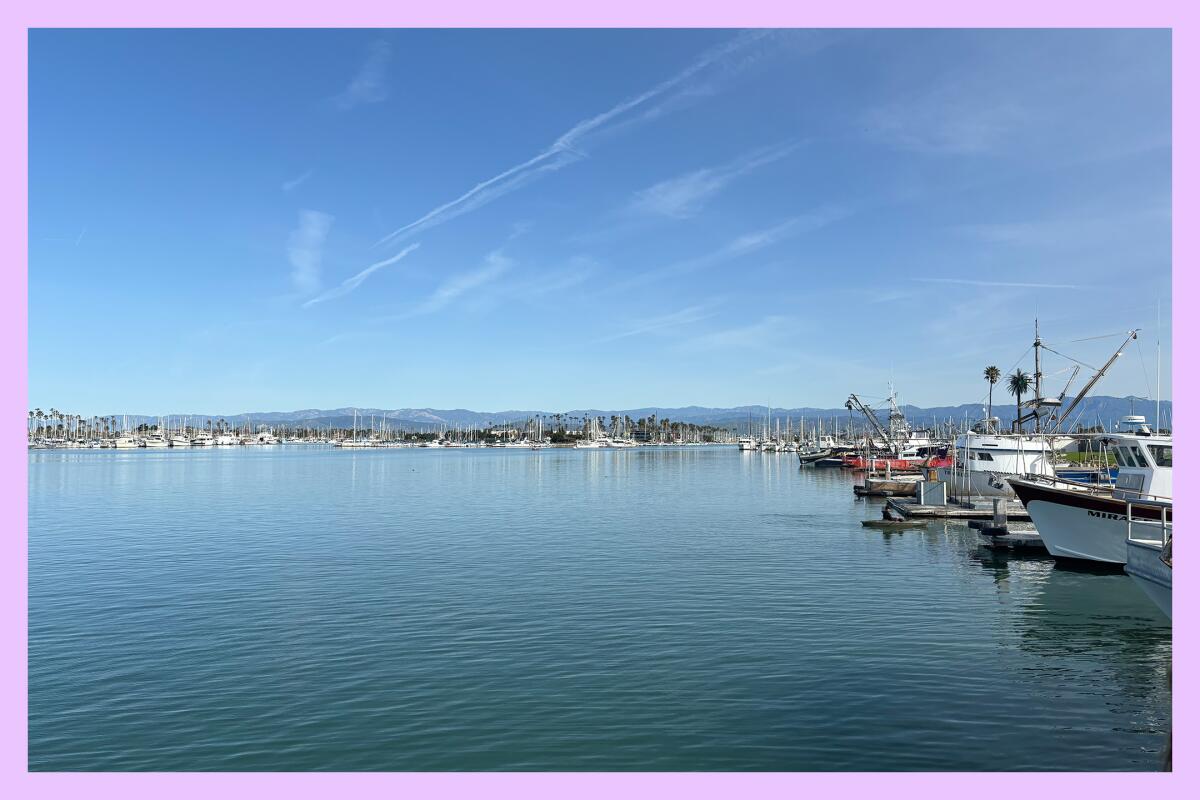
In Hensley’s view, most people in Southern California have no idea there’s a marine paradise just offshore. But that may be changing: The Santa Barbara Channel was recently designated a Whale Heritage Area, one of just two such sites in the U.S. The channel received the designation for its unique and thriving underwater ecosystem where warm and cold currents meet. That mix causes nutrient-rich water to rise upward and support a whole web of life, including bait fish, sea birds and over 25 species of whales, dolphins and porpoises.
My wife and I recently joined one of Hensley’s whale-watching tours, and the channel’s sea life was on full display. Pelicans skimmed the waves as we exited the harbor, and within about 20 minutes, a pod of dolphins appeared, arcing gracefully through the water near the bow of the boat. As we made our way into the channel, a volunteer naturalist gave us a primer on the whales we might see, and Hensley used an intercom to make announcements about where we were headed.

Soon, groups of circling sea birds came into view — a sign of “bait balls” of fish below the water’s surface that attract whales, especially humpbacks. Then we saw a spout in the distance. Hensley motored closer. Soon, we were zipping between groups of humpbacks and gray whales as they spouted, glided along the surface and then dived back into the ocean’s depths.
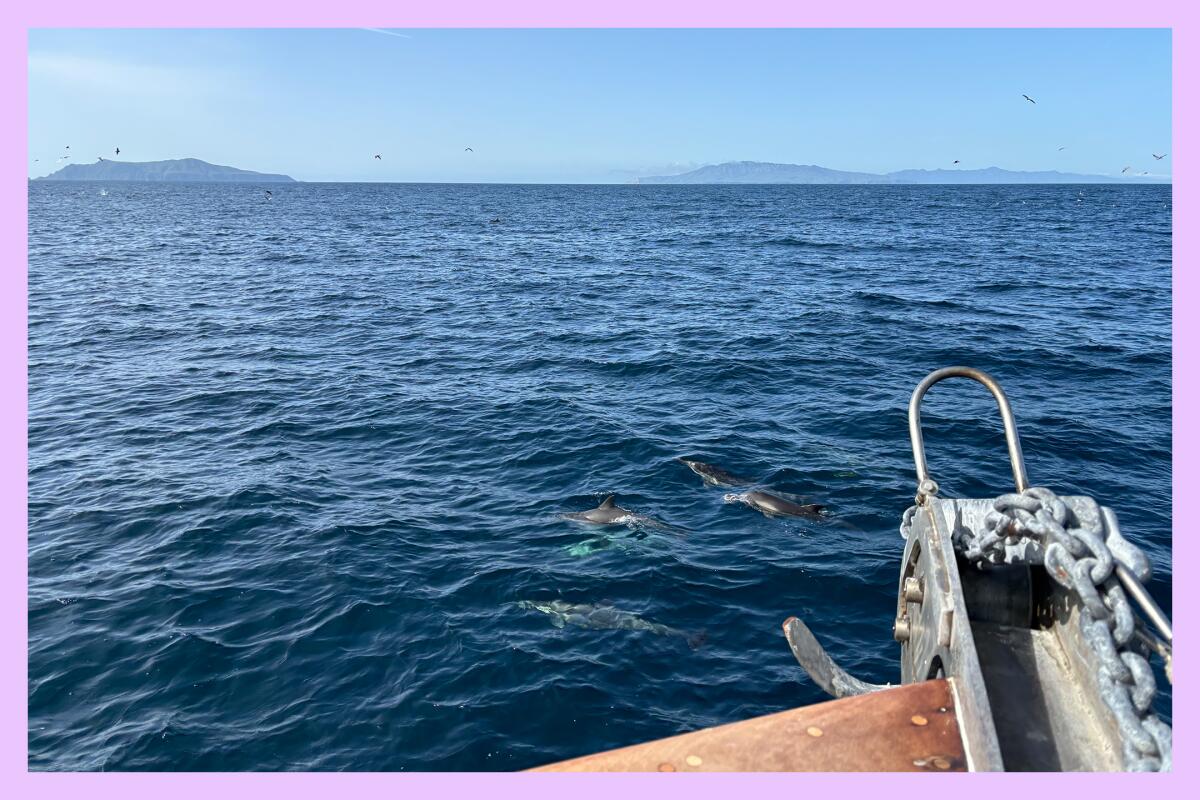
Now’s the time to get out there. The gray whale migration lasts another couple of weeks, and Channel Islands Harbor is hosting its 25th annual Celebration of the Whales on April 7. Stop by to learn more about the whale migration, listen to live music, and help paint a community mural. Tours at Channel Islands Whale Watching are offered until May; check out the Visit Oxnard website for info on other whale tour operators.
Bring a pair of binoculars and keep your eyes peeled — if you’re really lucky, you might get mugged.
3 things to do

1. Paint the trails blue in Los Feliz Throw on your new Shohei Ohtani jersey and join hundreds of Dodgers fans for an intermediate morning hike through Griffith Park. The uniquely Angeleno pep rally, hosted by Dodgers Blue Hiking Crew , will stretch approximately 6½ miles, beginning with the Fern Canyon Trail, and ending with the Mineral Wells Trail. It’ll be led by L.A.-based hiking group H1gh Hikers ’ Juan Andrade, and last approximately 4 hours. Attendees are encouraged to wear blue! Also: sun protection and appropriate trail shoes. Fans should meet at Merry-Go-Round Parking Lot No. 2 at 7 a.m. Sunday. The hike will start at 7:30 a.m. sharp. For more details visit the group’s Facebook Events page .
2. Make the beach sparkle in Ventura Help keep our precious coast pristine by joining a beach cleanup effort at the Channel Islands National Park. The three-hour event kicks off at 9 a.m. Saturday. Volunteers should bring their own buckets, gloves and water, but other supplies will be provided. No need to register; for more information visit venturaharborvillage.com .
3. Rethink your relationship with plants in Altadena Get to know the greenery that grows in L.A. on an ecology walk with Paige Emery , an artist and herbalist whose work is informed by critical ecology, ethnobotany and ecopsychology. The 2-hour tour will include a discussion on building reciprocal relationships with our natural environment. It’s hosted by L.A.’s A+D Museum and costs $7.50 for the general public, and $3.50 for members and students. The journey begins at 10 a.m Sunday at the Echo Sunset Prieto Trail Loop. To learn more and buy a ticket, visit eventbrite.com .
The must-read

Although she’s only 12 years old, Evan Kim is already a faster runner than I (or most people) ever will be. Last month, she ran the Ventura Marathon in a blistering 2 hours 58 minutes, averaging less than 7 minutes per mile. Times writer Noah Goldberg chronicled this speedy young runner and shed light on what makes her so fast. An iron will is certainly part of it, and an early start didn’t hurt, either: She has been running since she was 6. Now she’s training for the California International Marathon in December, where she aims to run the fastest marathon for a 12-year-old person. I think she’s an inspiration to runners of all ages, whether you’re just starting out with running or you’re a veteran marathoner.
Happy adventuring,

It’s not related to the outdoors, but I loved this photo essay about the closing of The Times’ Olympic printing plant, where newspapers have been produced for decades. (Production has moved to another plant in Riverside.) It’s an intriguing look into the intricate process of creating a daily newspaper and the hardworking people who make it happen.
For more insider tips on Southern California’s beaches, trails and parks, check out past editions of The Wild . And to view this newsletter in your browser, click here .
Sign up for The Wild
We’ll help you find the best places to hike, bike and run, as well as the perfect silent spots for meditation and yoga.

Michael Charboneau is a freelance writer covering gear and the outdoors, and he’ll be writing The Wild newsletter for the next few months. He has written for a variety of publications, including Men’s Journal, Runner’s World and InsideHook, and he lives in West L.A. When he’s not writing, he can be found running, hiking and biking around Los Angeles and its mountains.
More From the Los Angeles Times

Travel & Experiences
14 glorious things to do in Vancouver, the ‘California of Canada’
March 26, 2024

3:30 a.m. alarms, coffee and a quest to find the greatest sunrise spots in Joshua Tree
March 25, 2024
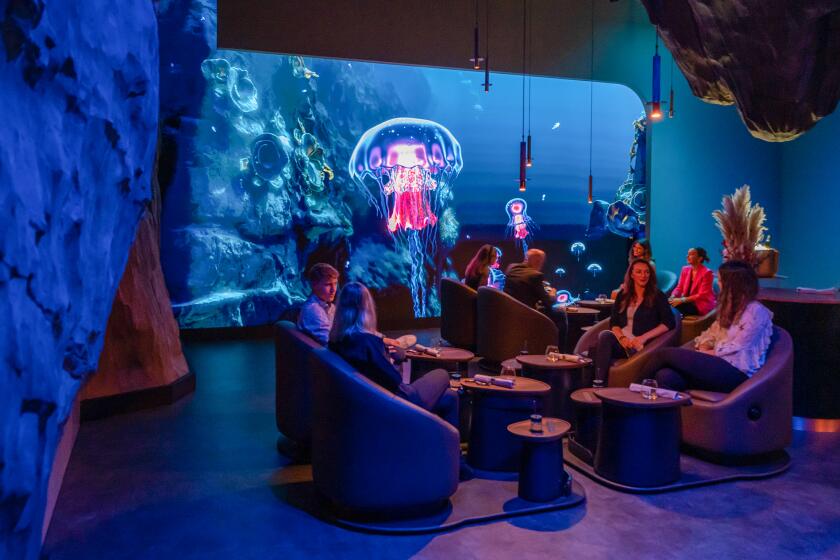
Dine at a table that moves you from room to room? A look at the future of theme parks
March 20, 2024

What became of Marlon Brando’s ecological wonderland on the sea? I visited to find out

COMMENTS
On June 19 an orca rammed a 7-ton yacht multiple times off the Shetland Islands in Scotland, according to an account from retired Dutch physicist Dr. Wim Rutten in the Guardian. "Killer whales are ...
Why are killer whales going 'Moby-Dick' on yachts lately? Experts doubt it's revenge. An unusually large group of killer whales was spotted off the coast of San Francisco on May 7. The ...
A pod of killer whales bumped one of the boats in an endurance sailing race, the latest encounter in what researchers say is a growing trend of sometimes-aggressive interactions with Iberian orcas ...
Killer whales are pictured during a storm in the fjord of Skjervoy in 2021 off the coast of northern Norway. Researchers say orcas are stepping up "attacks" on yachts along Europe's Iberian coast ...
Three orcas (Orcinus orca), also known as killer whales, struck the yacht on the night of May 4 in the Strait of Gibraltar, off the coast of Spain, and pierced the rudder."There were two smaller ...
A trio of orcas attacked a boat in the Strait of Gibraltar earlier this month, damaging it so badly that it sank soon afterward. The May 4 incident was the third time killer whales (Orcinus orca ...
A pod of orcas has sunk a yacht in the Strait of Gibraltar. A pair of orcas swim off the west coast of Vancouver Island in 2018. For 45 minutes, the crew of the Grazie Mamma felt like they were ...
Scientists don't know why. An orca pod seen in the Strait of Gibraltar in 2021. Ester Kristine Storkson was asleep on her father's small yacht earlier this month, sailing off the coast of France ...
But pods of killer whales have done serious damage to boats in the region about a dozen times already this year, according to the Grupo de Trabajo Orca Atlántica, or GTOA, a research group ...
If the orcas are indeed playing, it may suggest that, in time, the boat attacks could end when the whales get bored. Orca populations around the world have been observed engaging in a new behavior ...
Encounters between orcas, or killer whales, and boats have been increasing since 2020, though no human injuries or deaths have been reported. In most cases, the whales have not sunk the boats.
There are no reported instances of wild orcas killing people, but, says Mustill: "If killer whales wanted to start attacking people, disabling small vessels is a very strange way of going about ...
Endangered orcas at risk from U.S. Navy, activists warn 06:54. Reports of killer whales appearing to try and capsize boats off the coast of Spain and Portugal have raised questions about the giant ...
A boat captain who was attacked twice by orcas, once in 2020 and once in 2022, told Newsweek that the whales seemed to have a plan. "First time, we could hear them communicating under the boat ...
On Oct. 31, a pod of killer whales swarmed a Polish yacht sailing in the Strait of Gibraltar. For 45 minutes, the orcas hit the vessel's rudder and damaged the boat, according to the company ...
The whales mainly targeted sailing yachts under 15m, although some fishing boats, RIBs and motorboats were also attacked. In one case, they broke a yacht's rudder in half.
Another killer whale has attacked a yacht in Spain, prompting some to wonder if orcas are teaching their young to ram boats. For the past 18 months, orcas have been attacking boats and yachts in ...
A pod of orcas, colloquially called killer whales, approached the yacht and "hit the steering fin for 45 minutes, causing major damage and leakage," the tour agency Morskie Mile, which is based in ...
Orca attacks on boats appear to be 'leapfrogging' across oceans as a yacht is rammed by killer whale north of Scotland. Orcas in Norway. An orca repeatedly rammed a yacht in the Shetland Islands ...
A tour boat in Australia watched as a pod of orcas chased and attacked a group of sperm whales. A rare video shows the predators fighting. Photo from Jodie Lowe, shared by Naturaliste Charters ...
There may be a fourth type of Pacific killer whale, called the oceanic orca, living far offshore California and Oregon. Above, an oceanic orca swims through Monterey Bay, which is about 500 square ...
Josh McInnes, CC-BY 4.0. A distinct subpopulation of orca whales appears to be using specialized hunting techniques to hunt the marine mammals that they eat. Orca-or killer whales-are the ...
Sperm whales blasted a "big dark bubble" of poop to prevent an impending orca attack off the southern coast of Western Australia. Scientists witnessed the clever defense strategy unfold Tuesday ...
A new study tracking a pod of 183 killer whales off the coast of California is no exception. These orcas found the perfect stage for an underwater ambush: a canyon in open water with steep walls ...
Please watch Documentary 'The Dark History of Killer Whale Captures': https://vimeo.com/229322388 A chronological documentary ranging from the 60s to prese...
A female killer whale that beached in northern Vancouver Island died on Saturday despite efforts by the community to push the mammal back into the water. Video of the incident, which occurred near ...
Thar she blows! A hot spot for whale watching in L.A.'s backyard. A humpback whale breaches in the Santa Barbara Channel. (Los Angeles Times illustration; photograph by Lottie Keenan) By Michael ...
The Russian animal rights group VITA says that guards and customers of a nearby exhibition center have, for months, reported "horrible sounds" and "cries" of killer whales. In spite of substantive evidence and a police report stating that the orcas are being held at this location, the aquarium has denied their presence — until ...
It is highly unusual that orcas should attack sperm whales given that the latter are thought to be "an apex predator" and "pretty much immune to killer whale attacks," Tucker added. Orcas often hunt in pods of over 50 of their kind, ABC reported. Tucker's speciality revolves around her observational research on orcas, ABC reported ...
Website - Punta Norte Orca Research; Photo ID - Punta Norte Orca Research; Facebook Page; Galapagos; Caribbean; Europe. Iceland. Facebook Page; Norway. Facebook Page; UK, Scotland, England and Ireland; Strait of Gibraltar and Canary Islands; Australia, New Zealand and Papua New Guinea. Australia. Facebook Page - Eastern Australia; ID ...